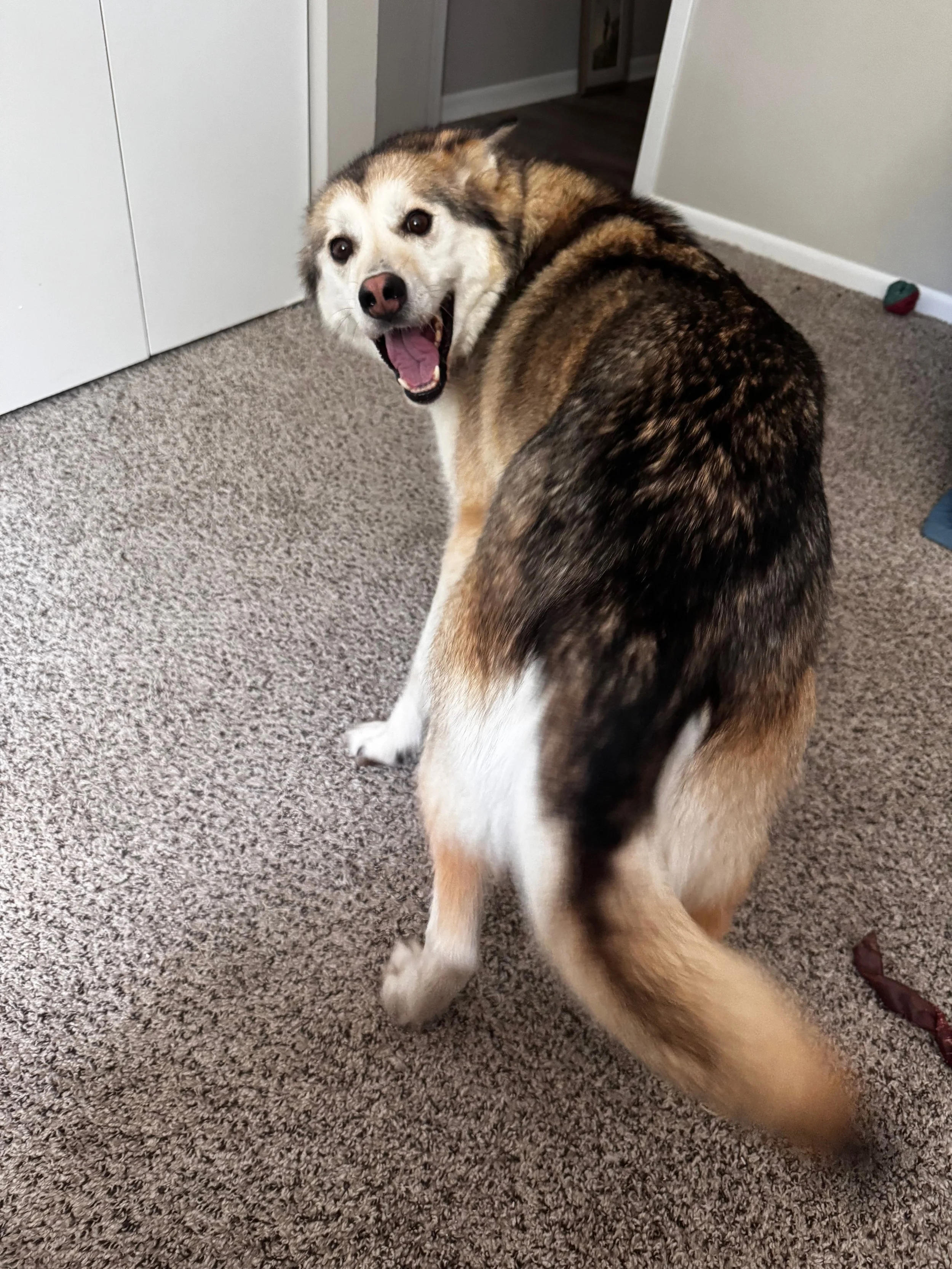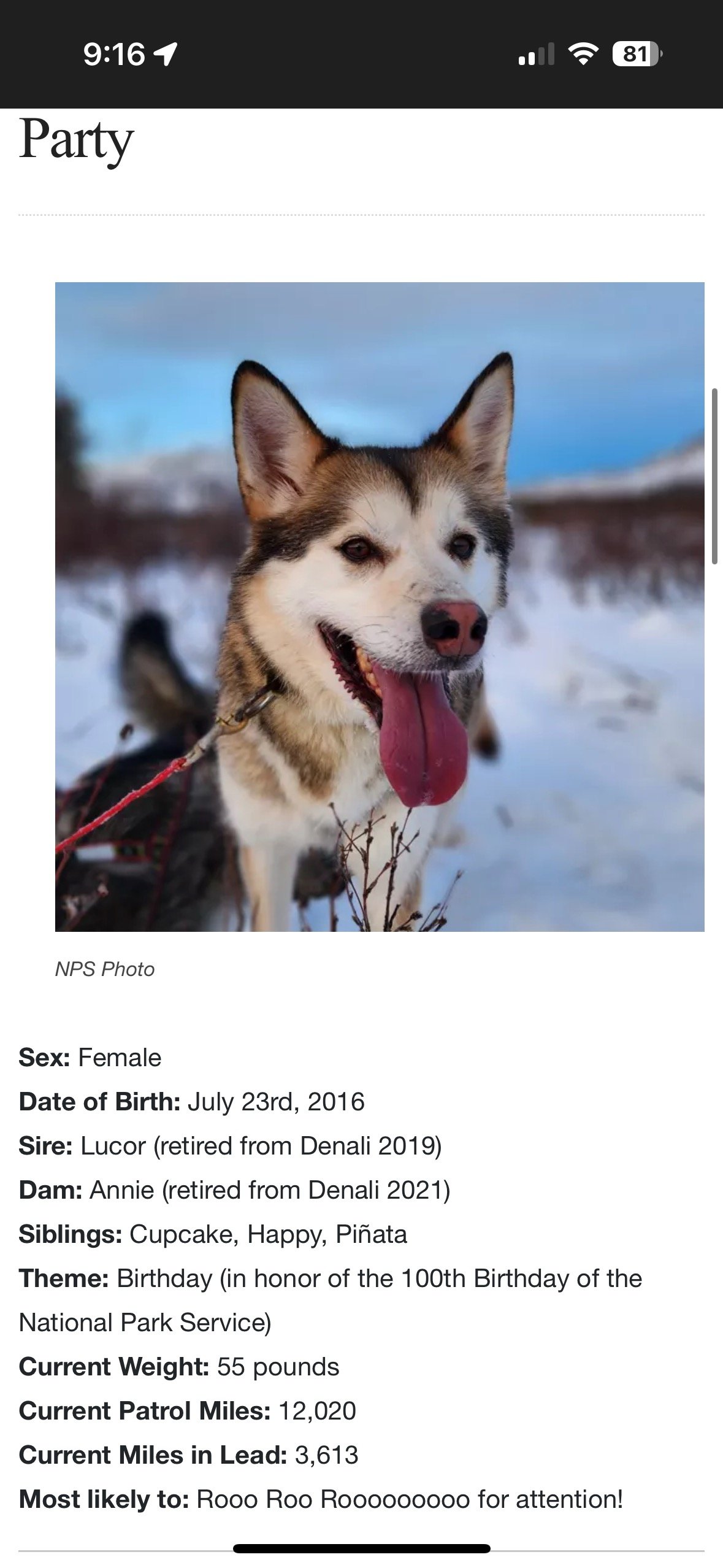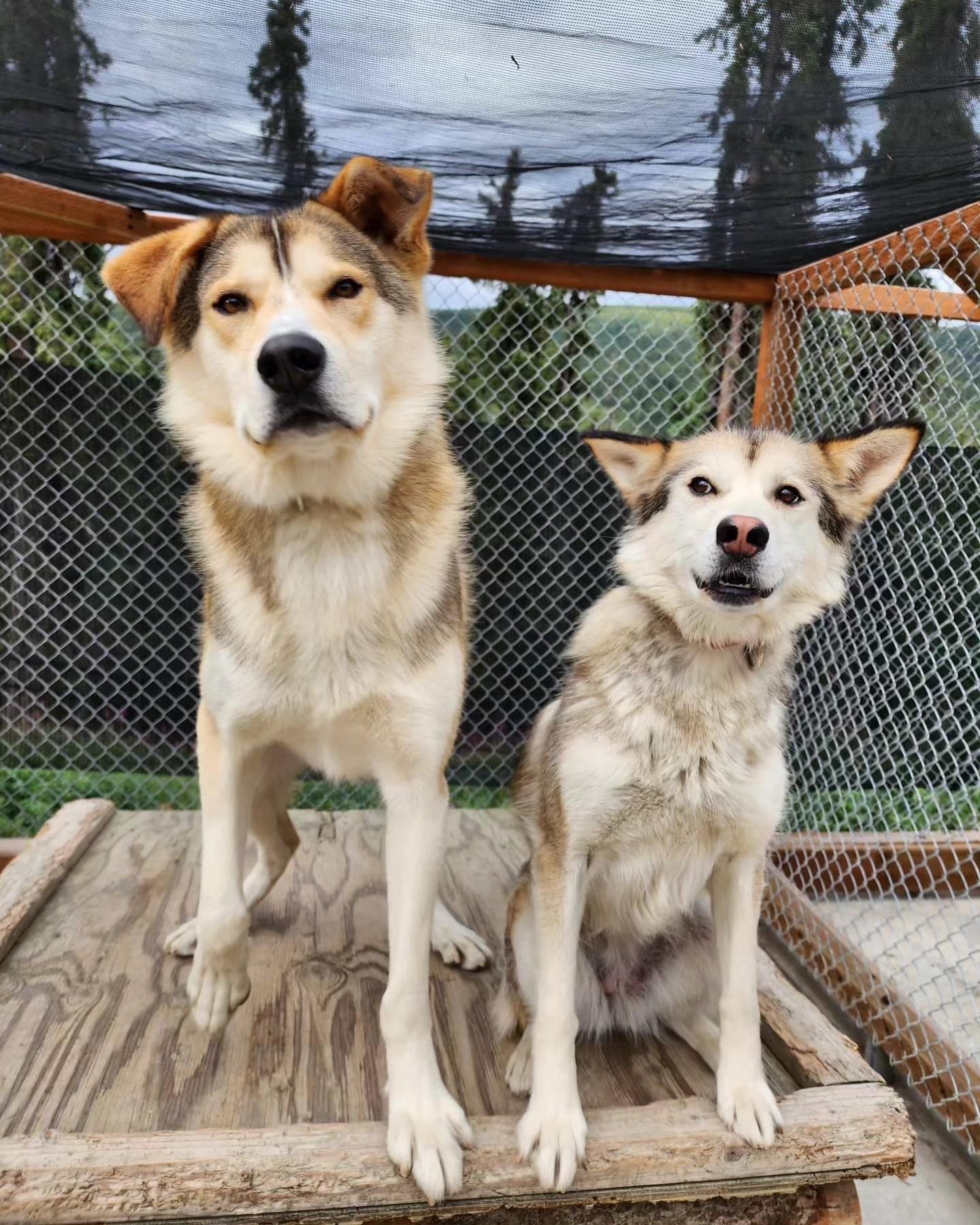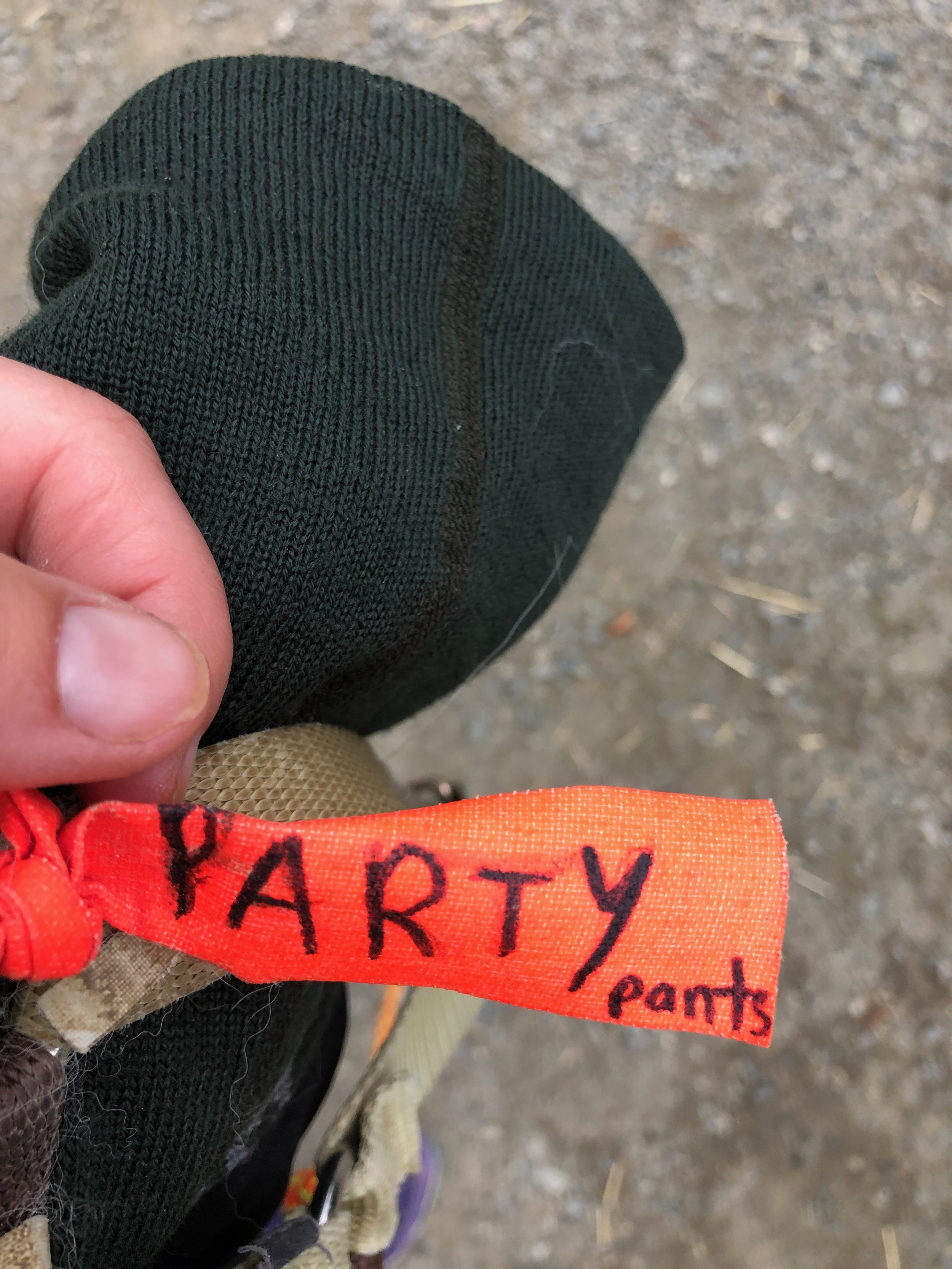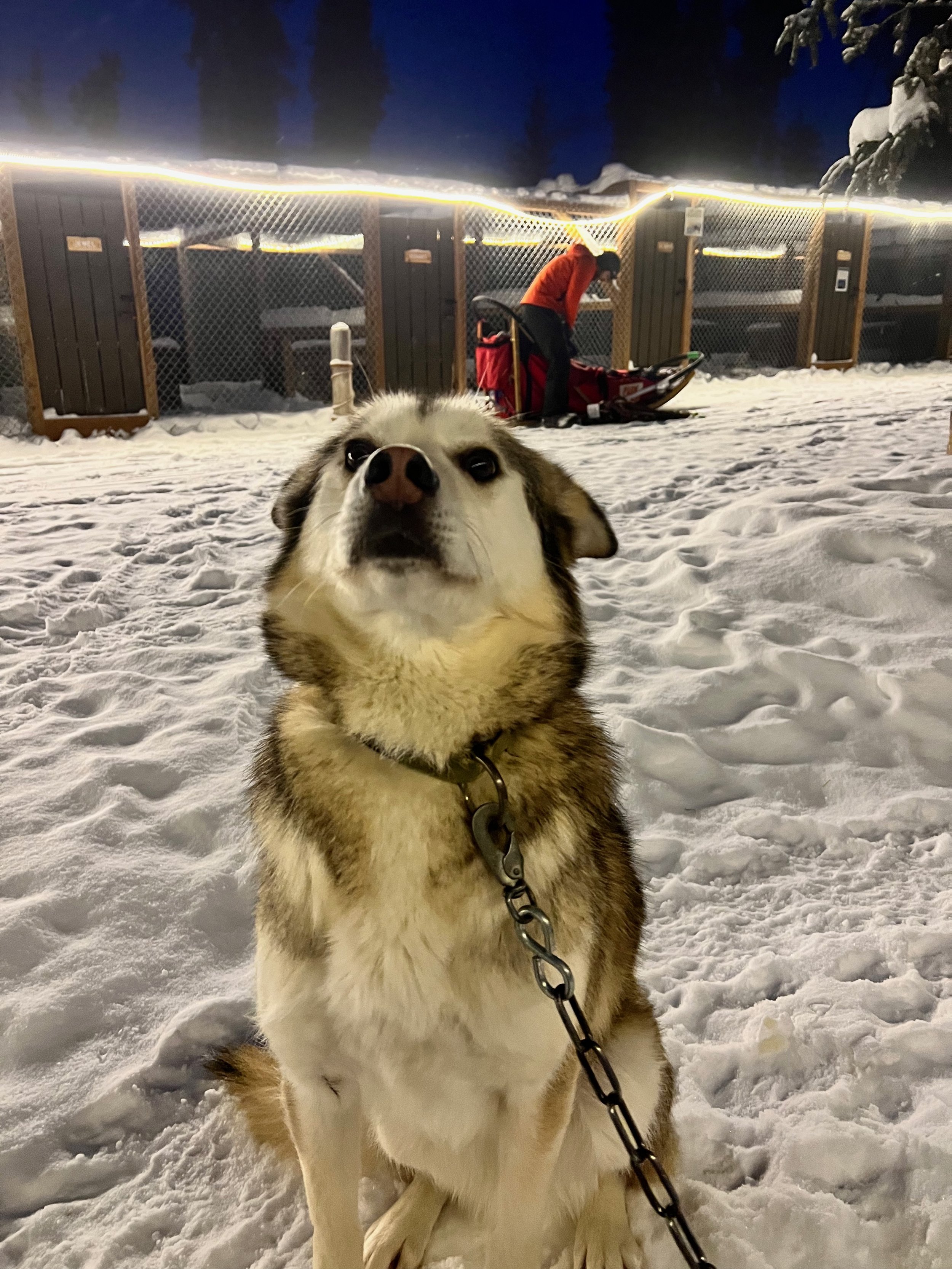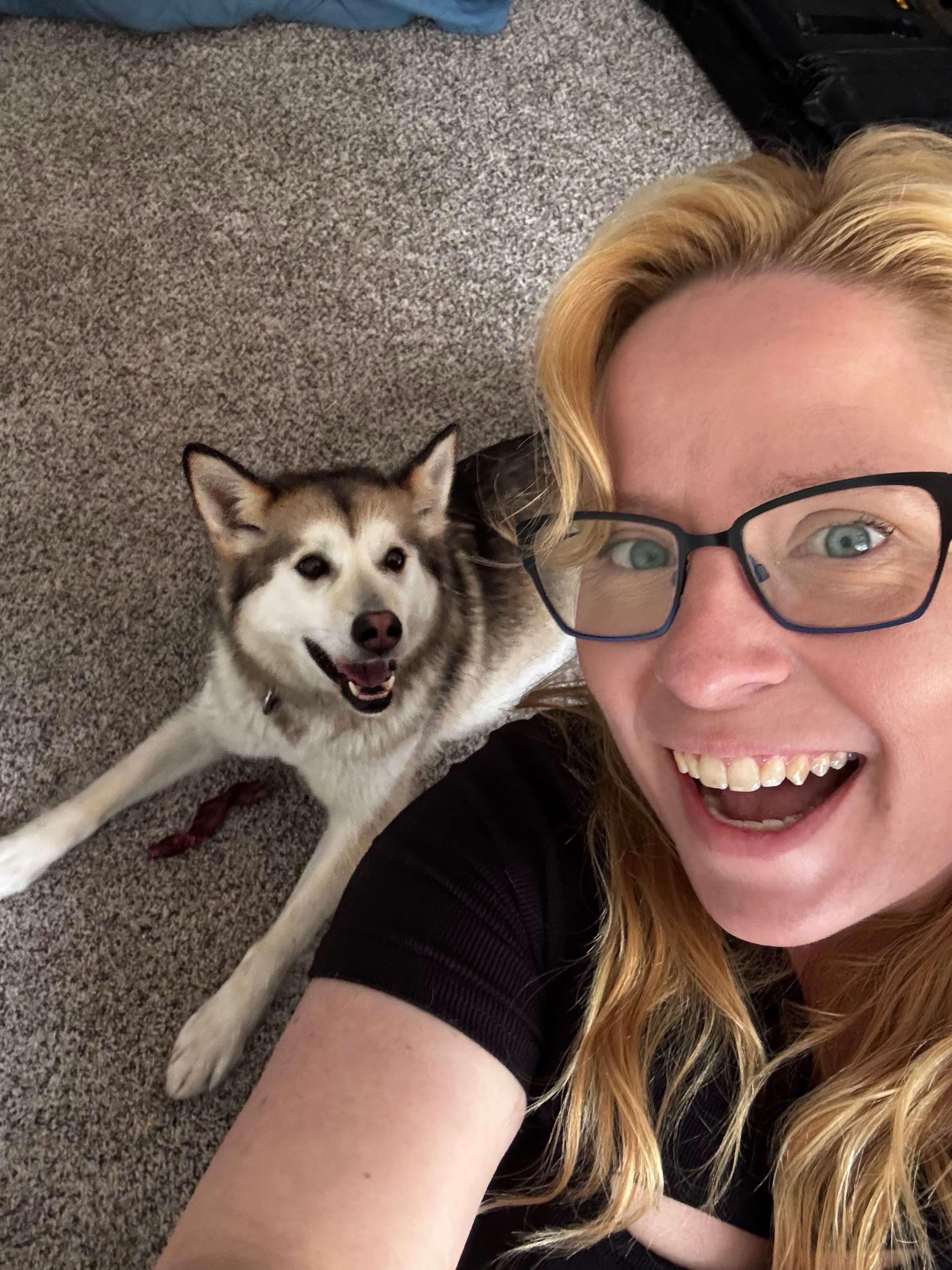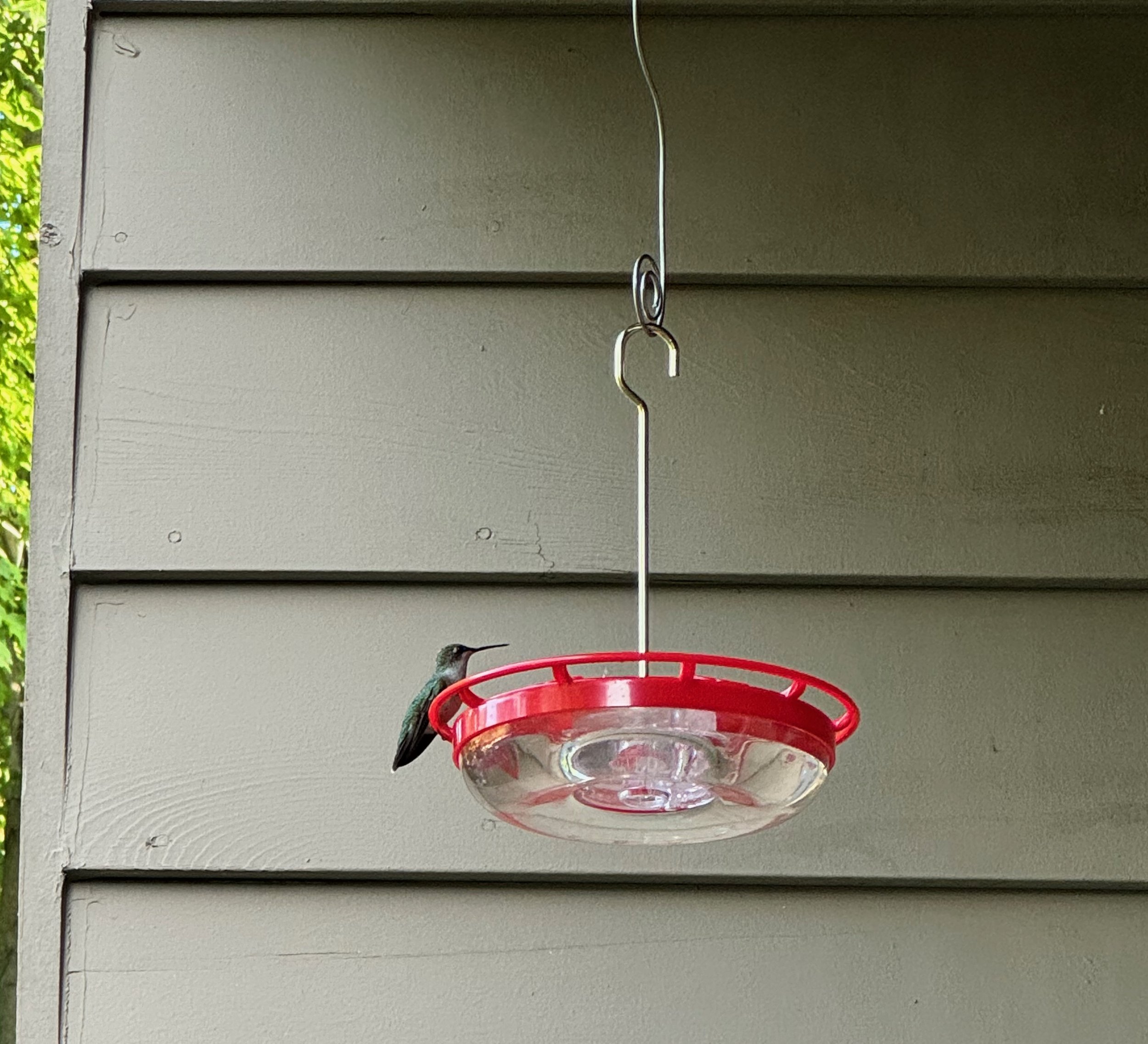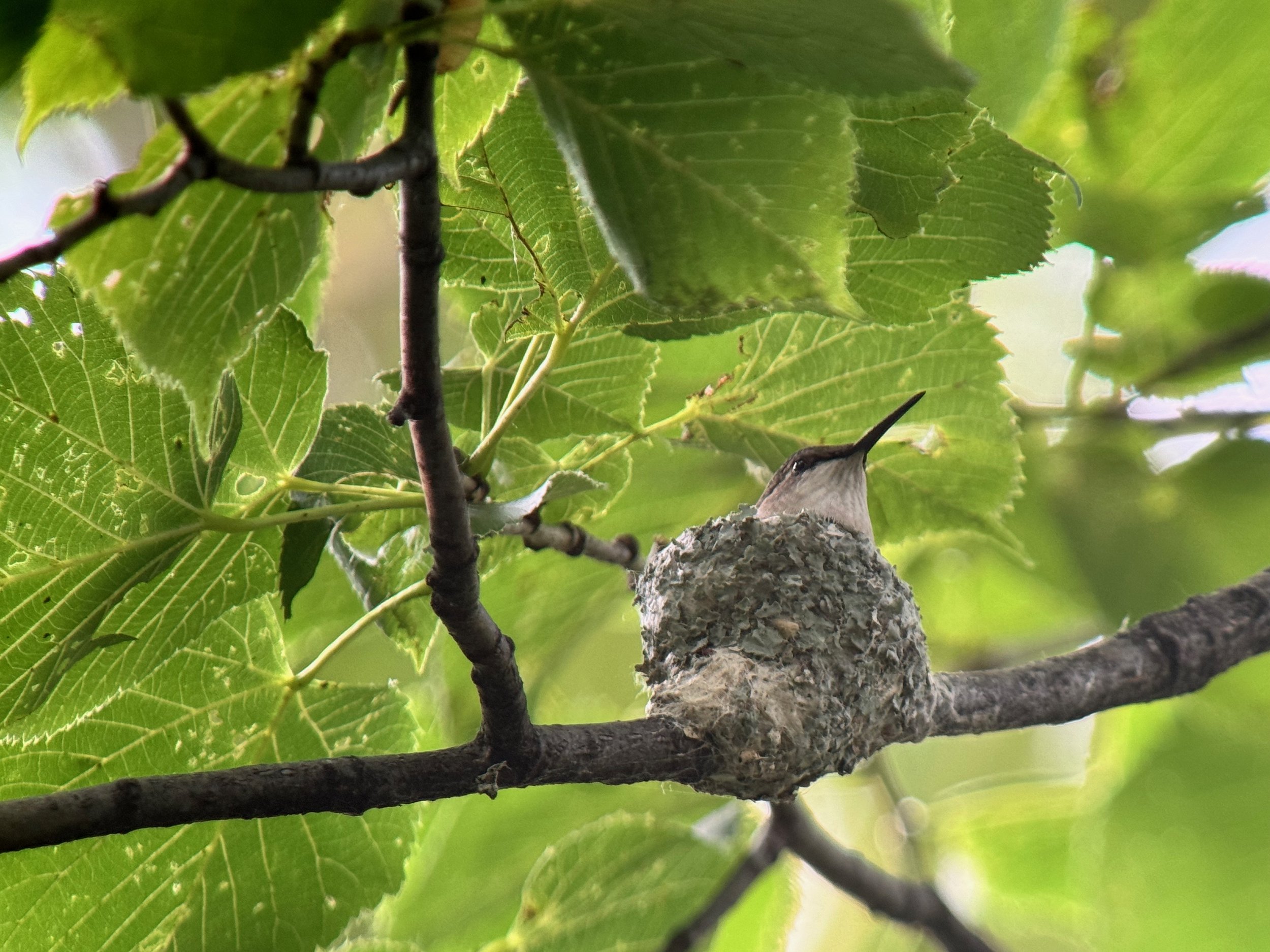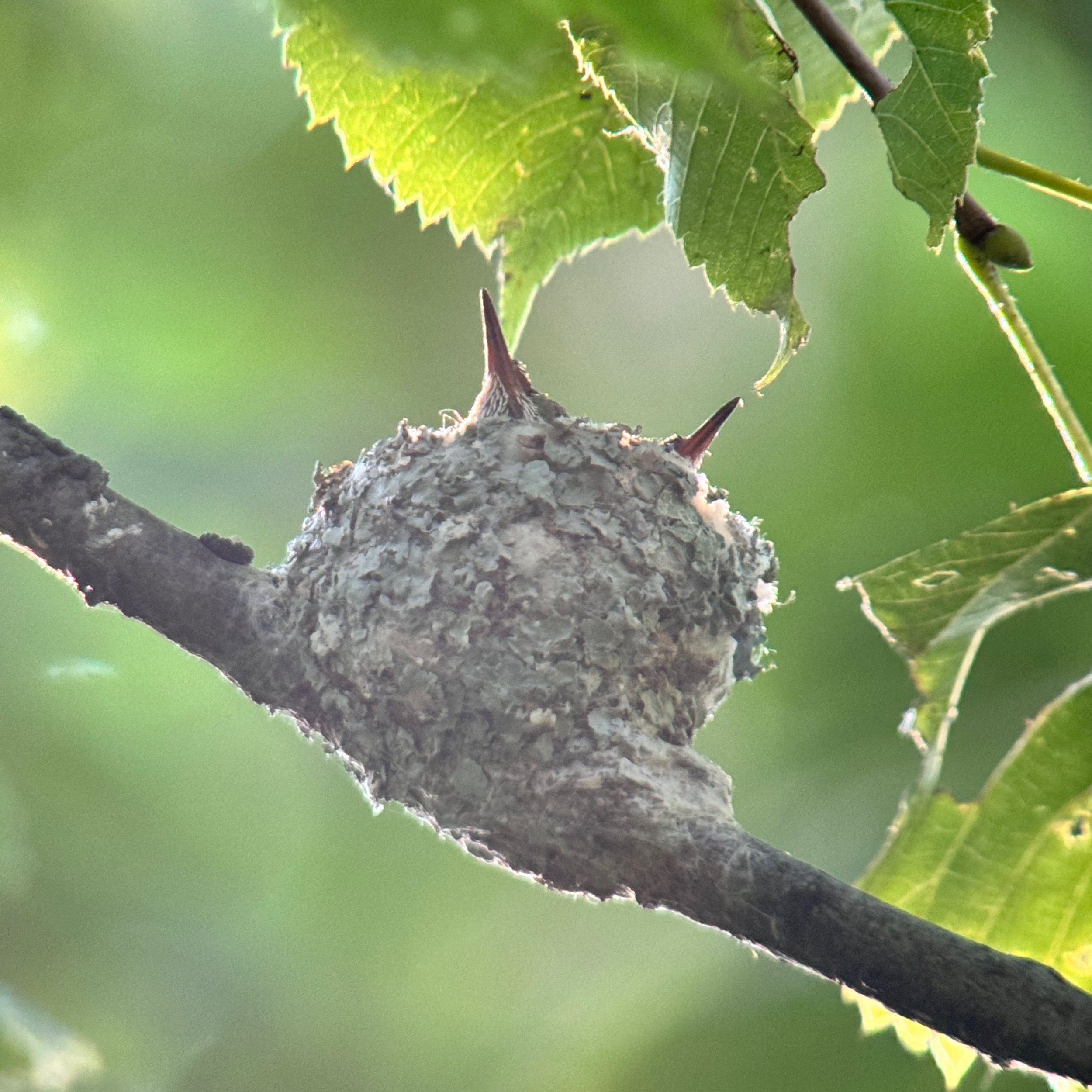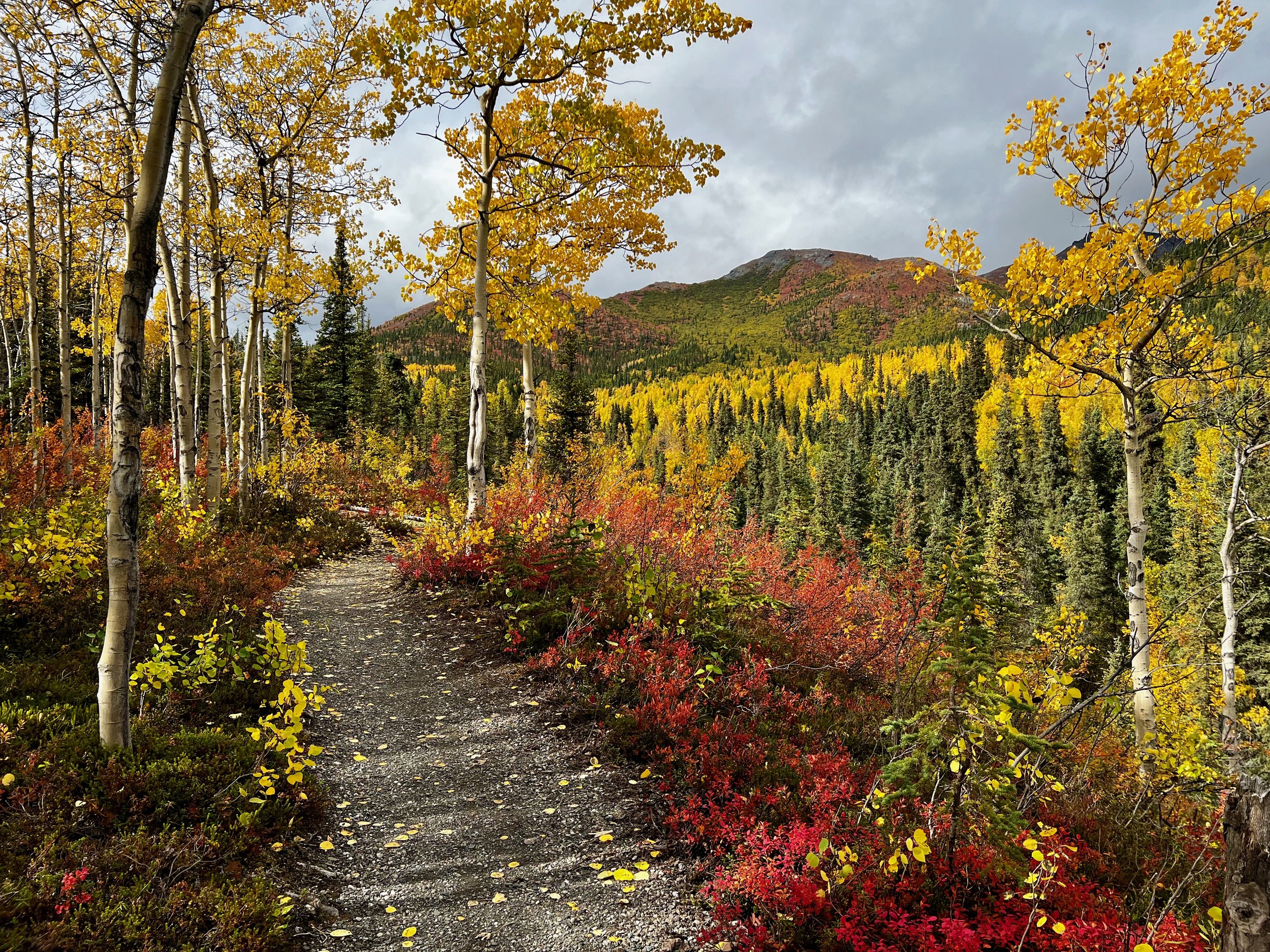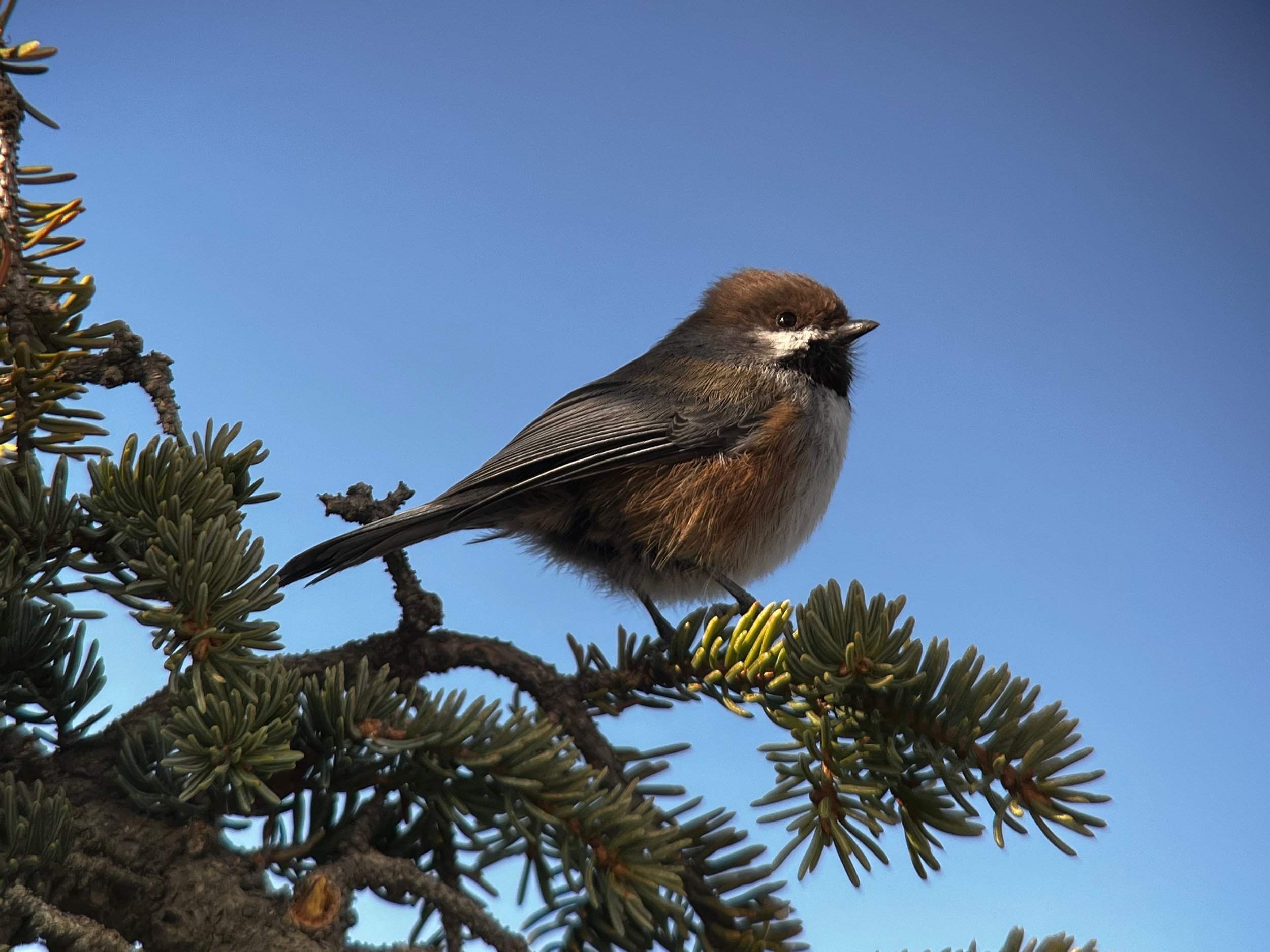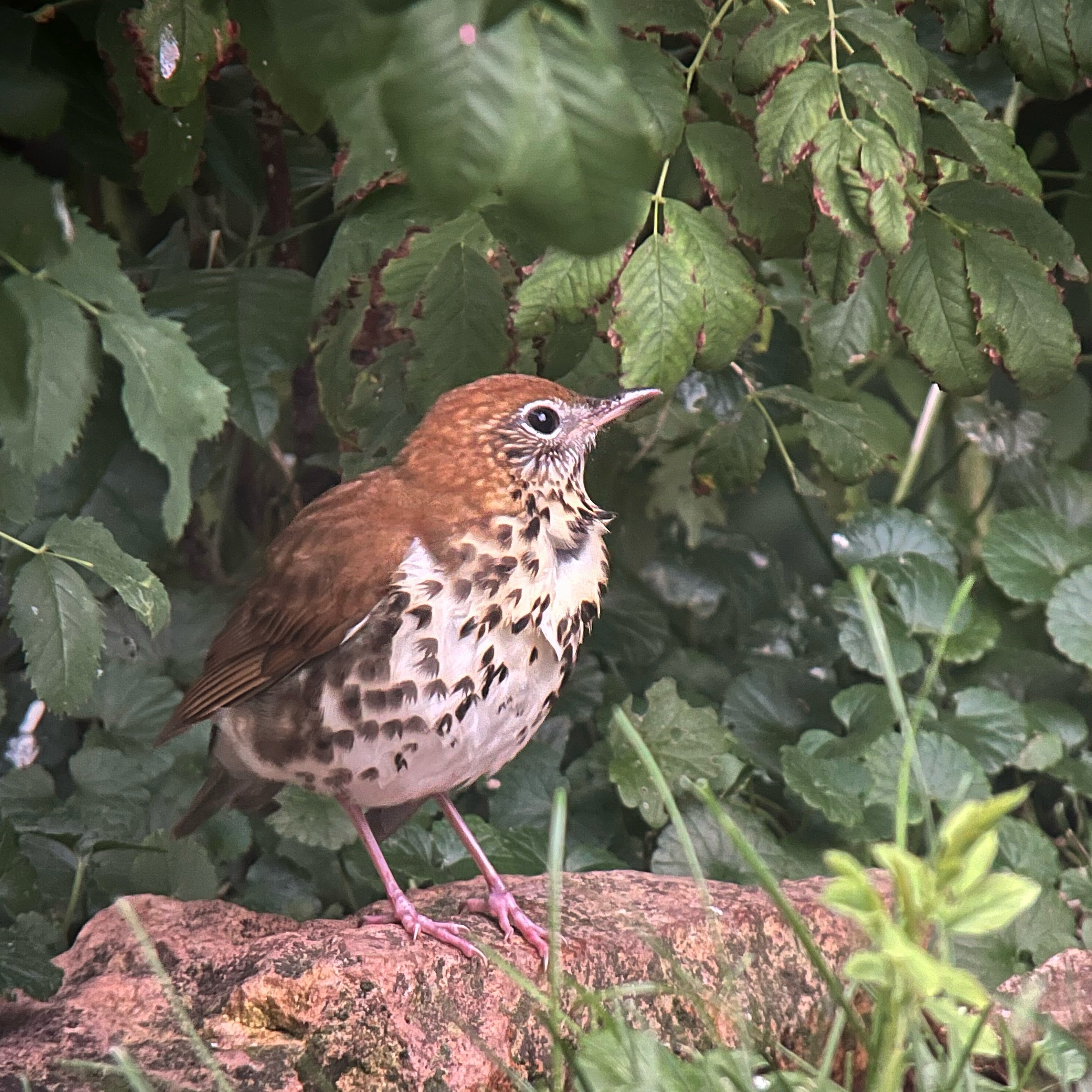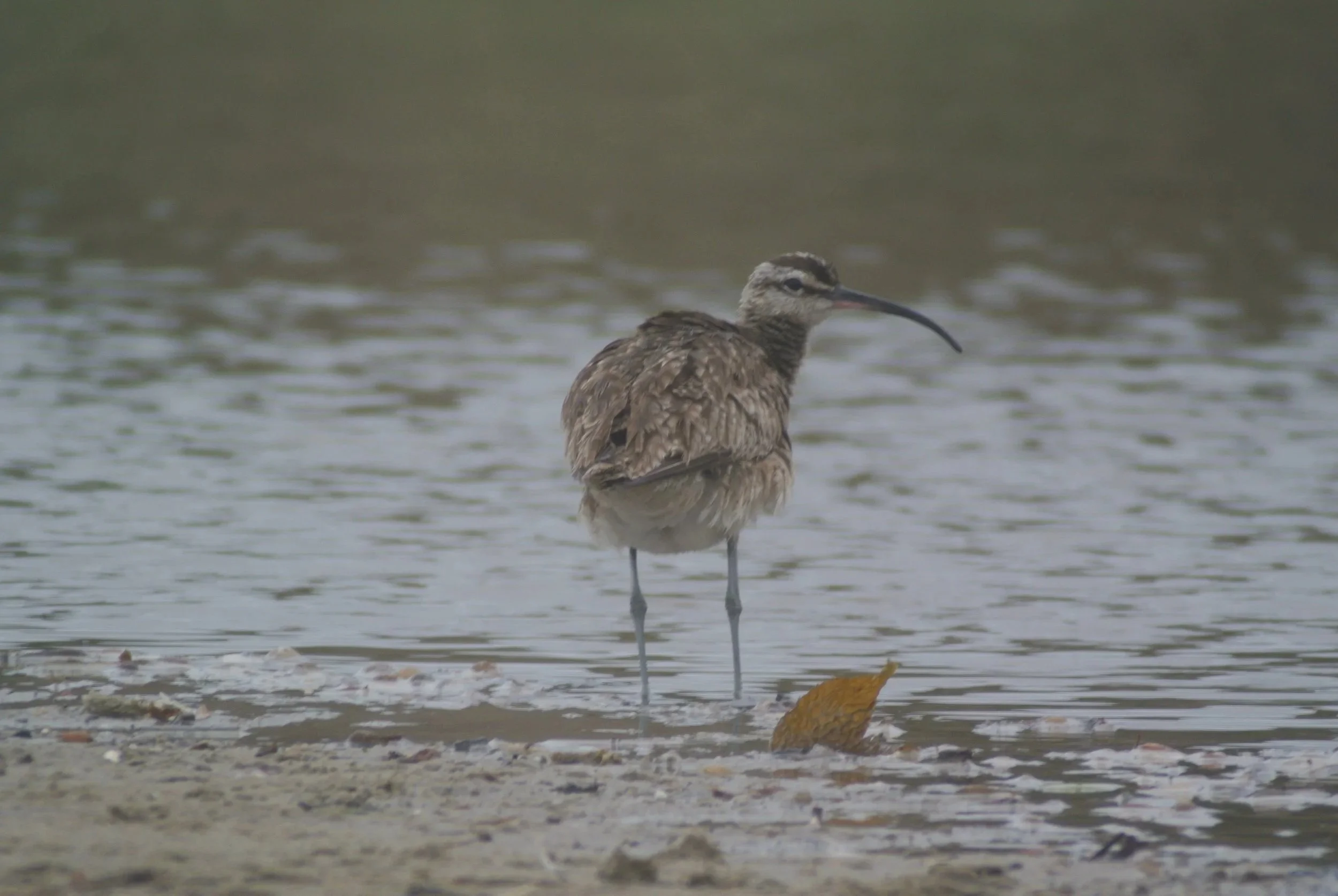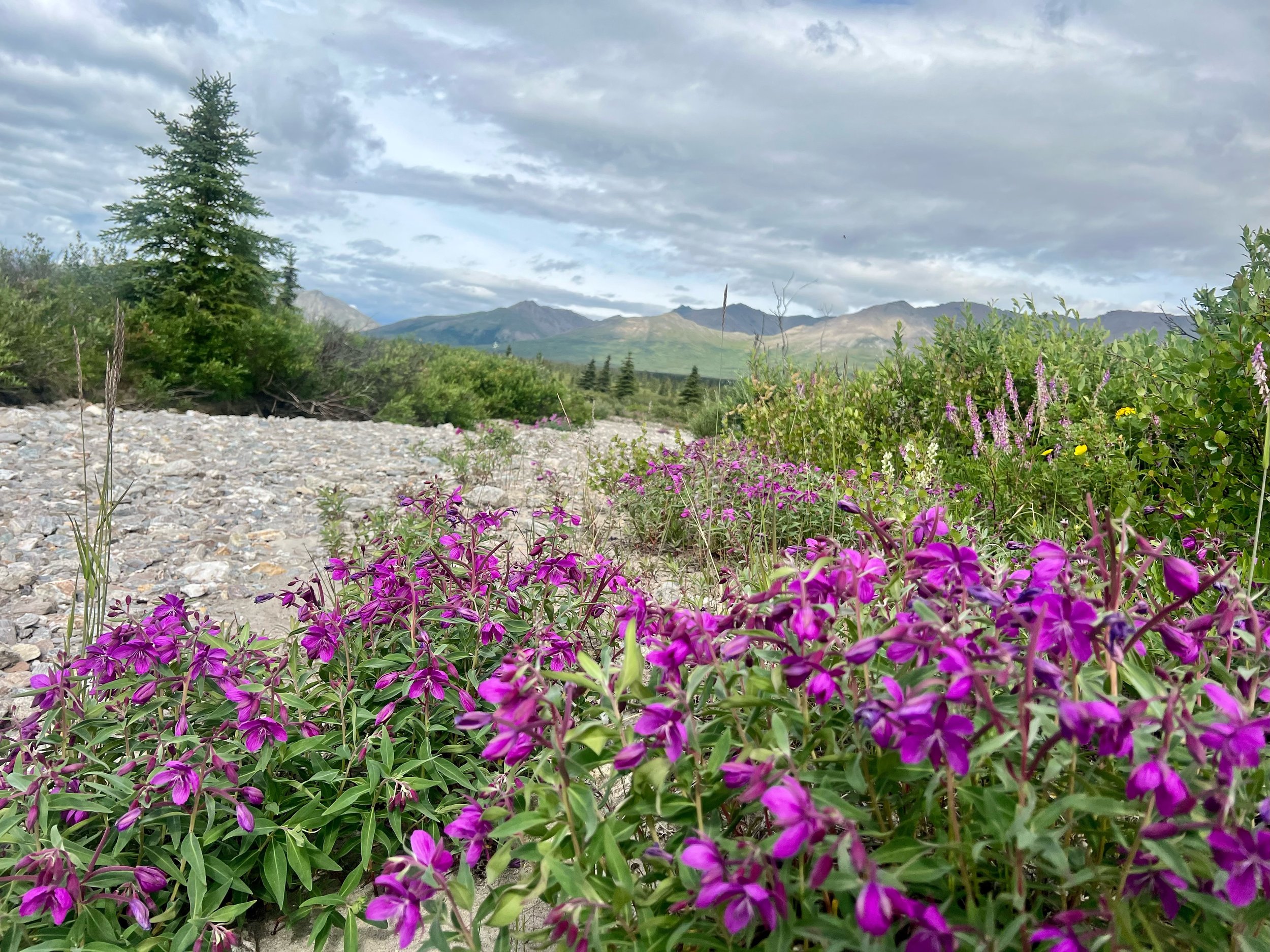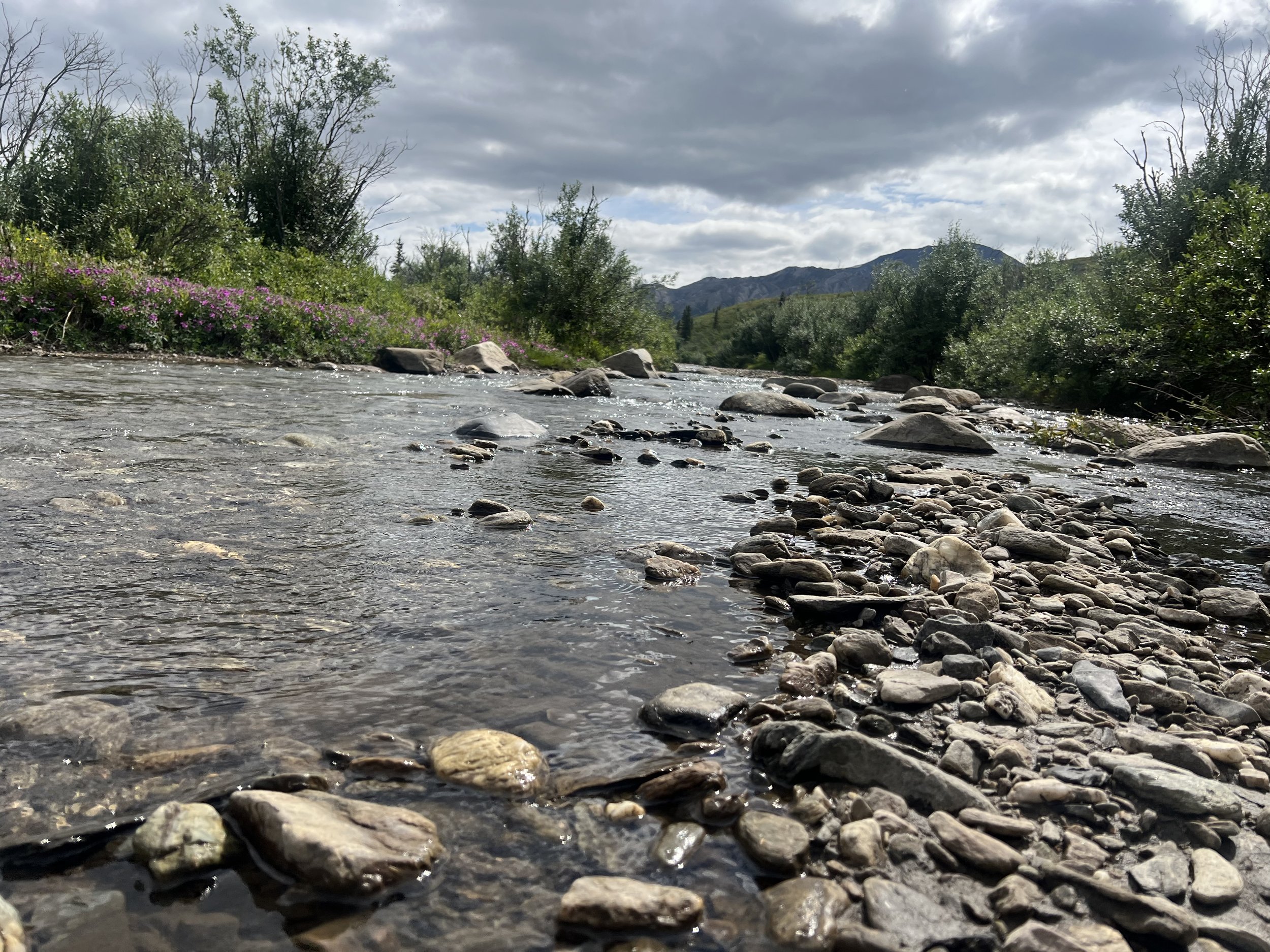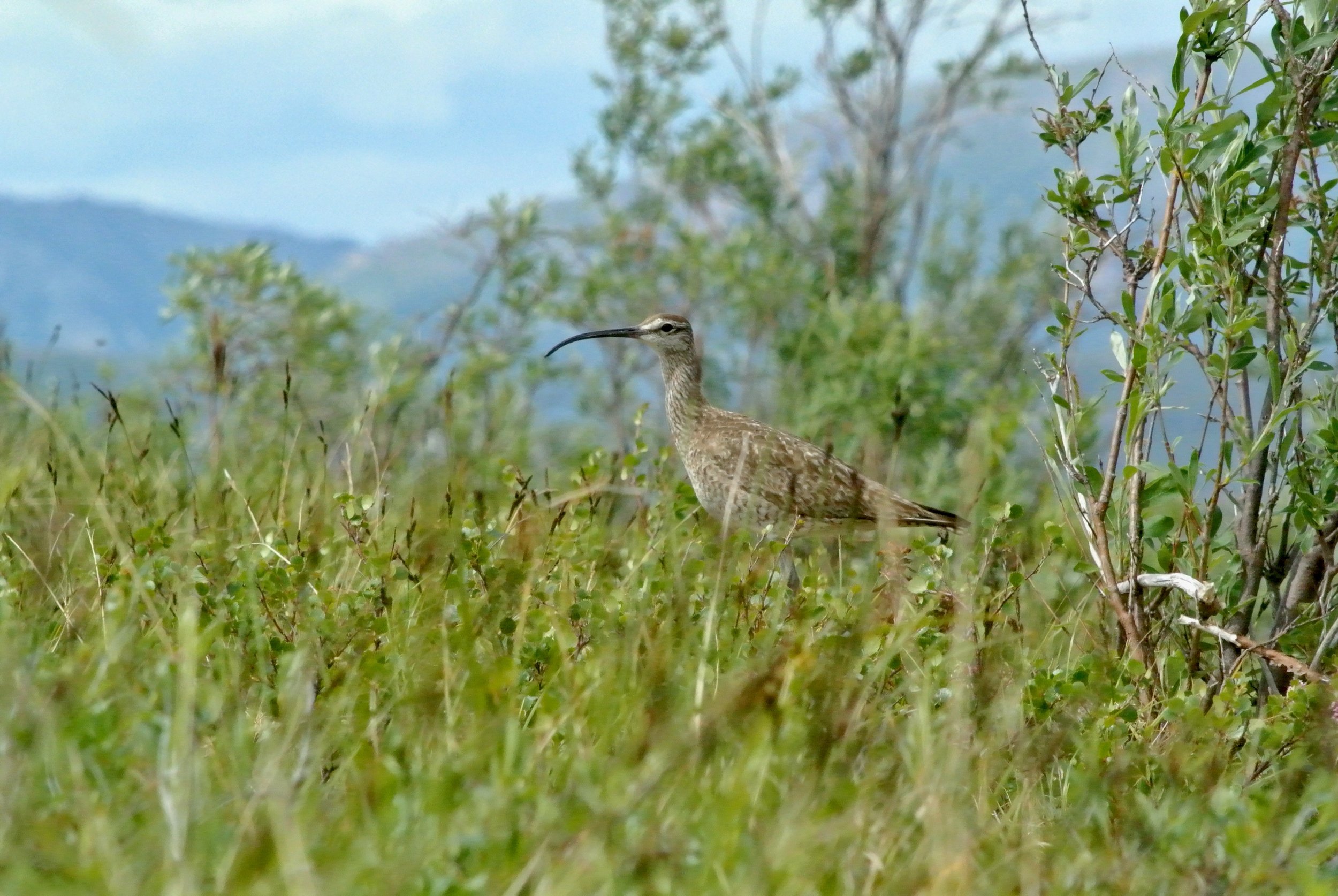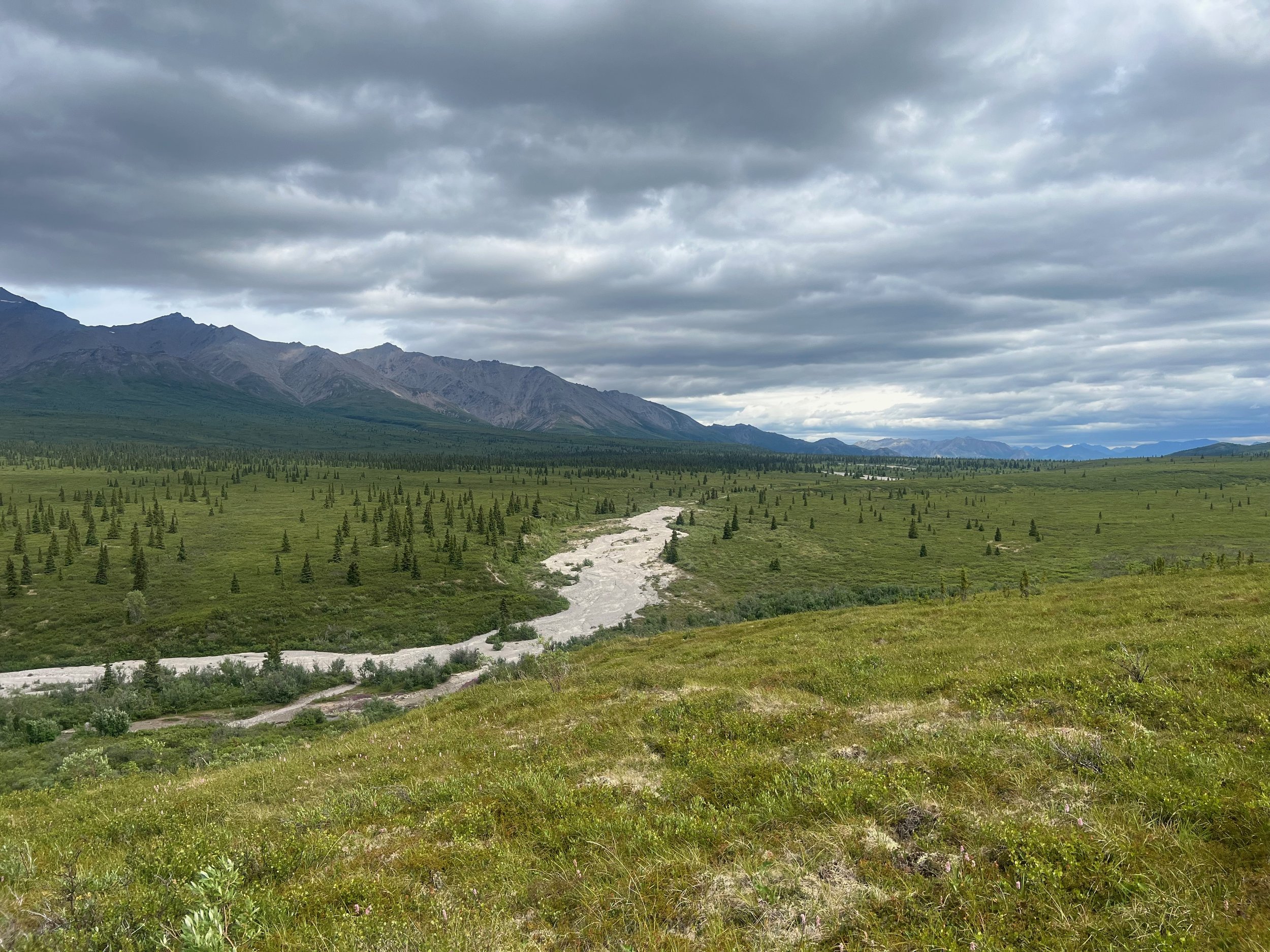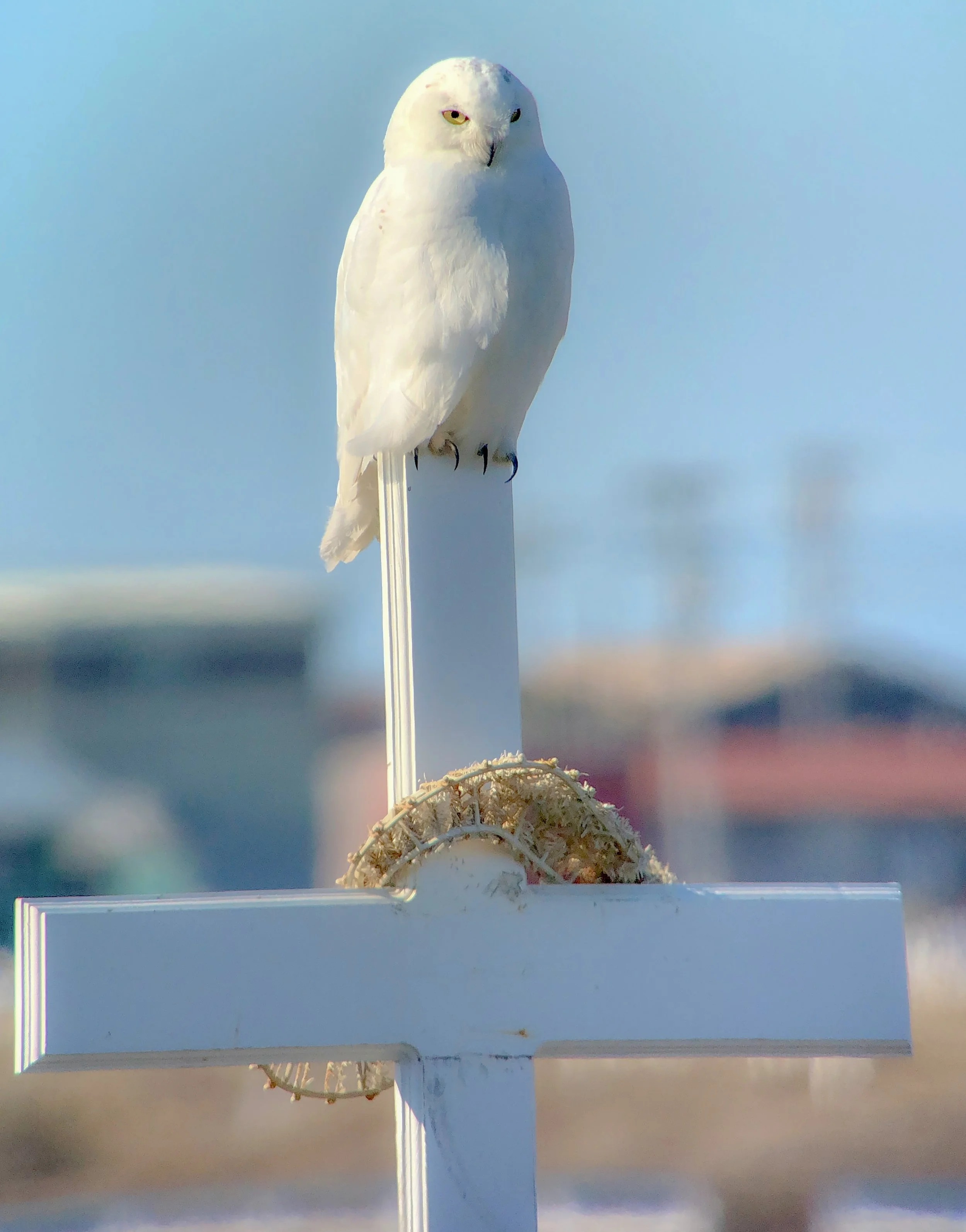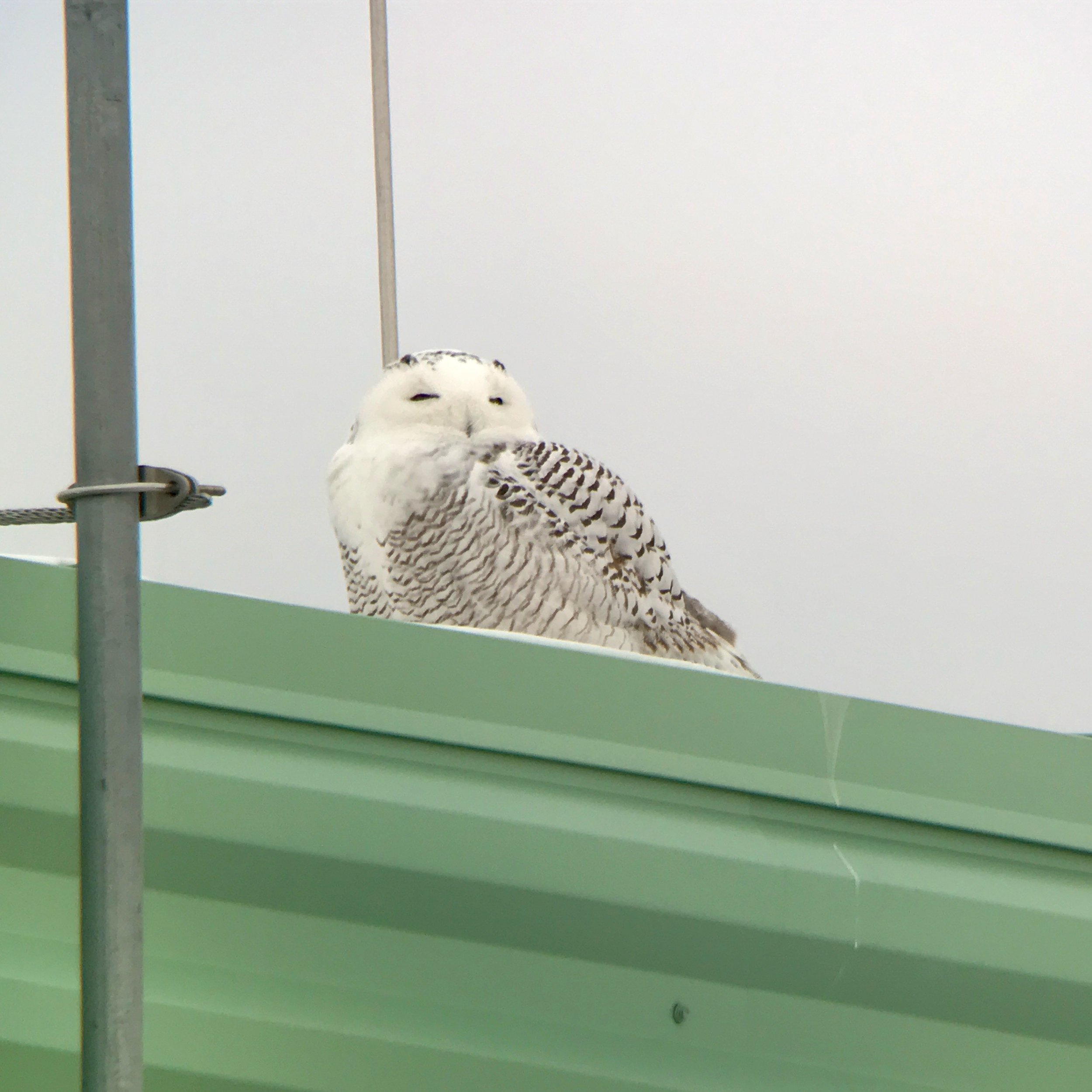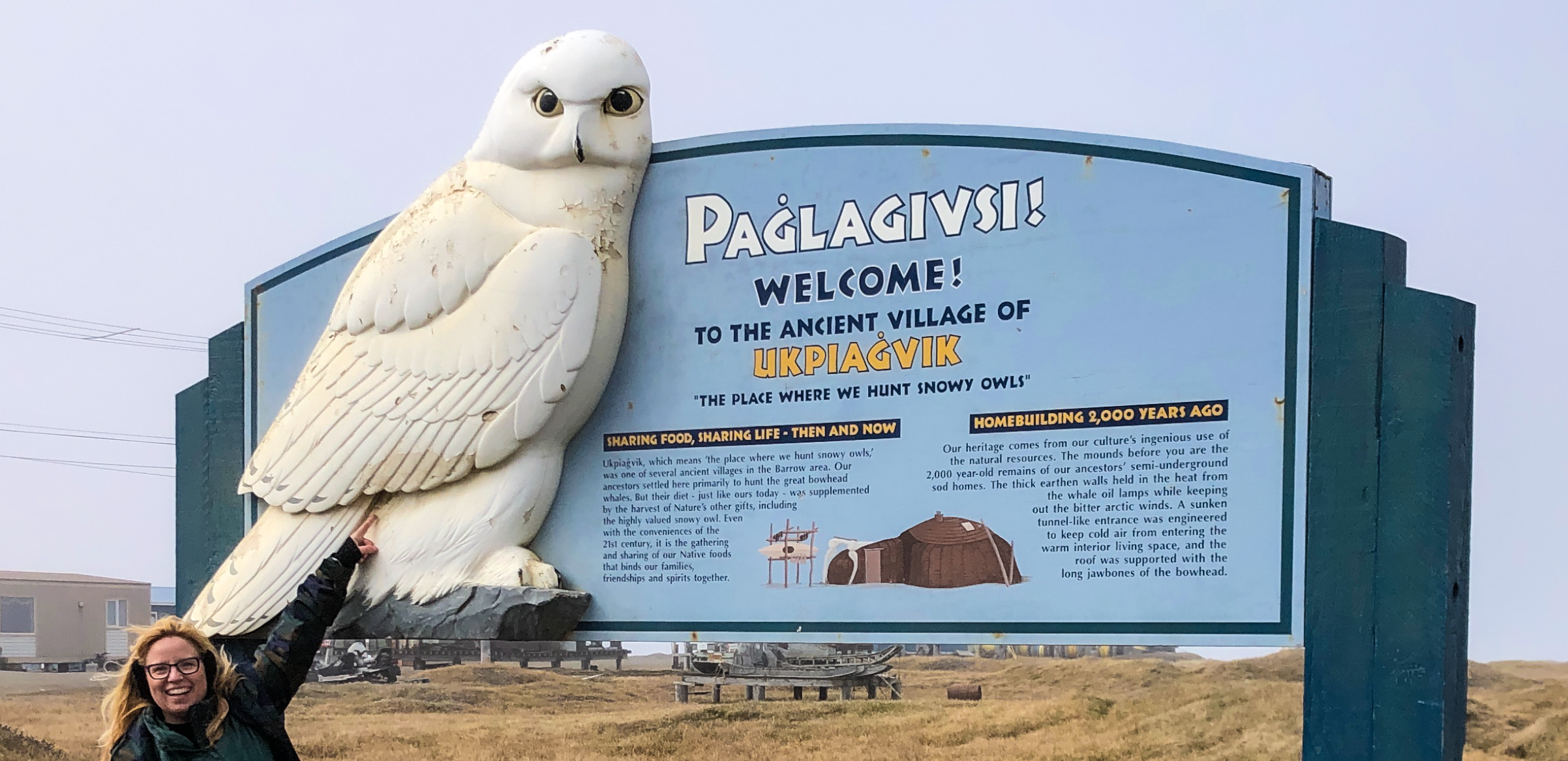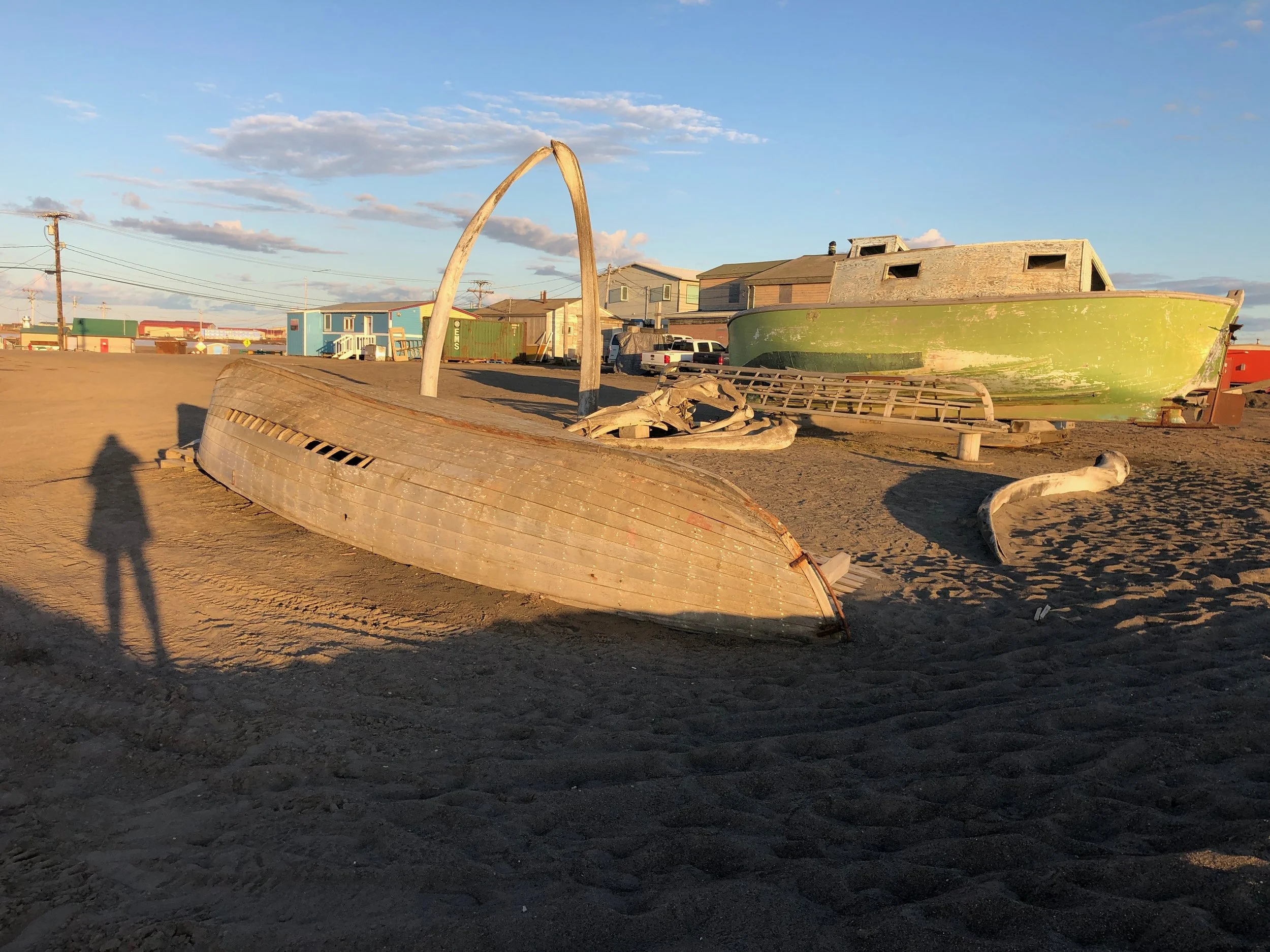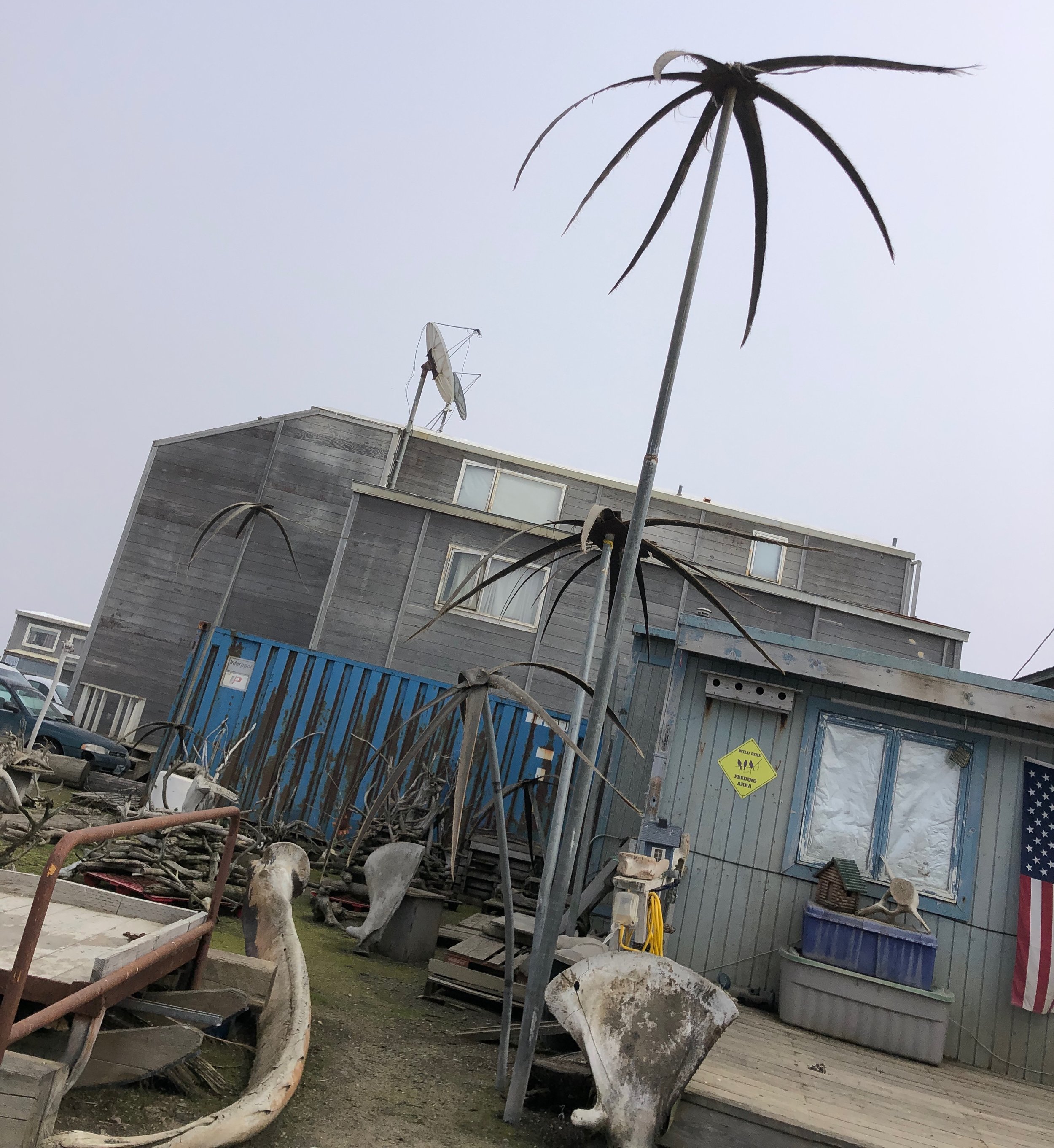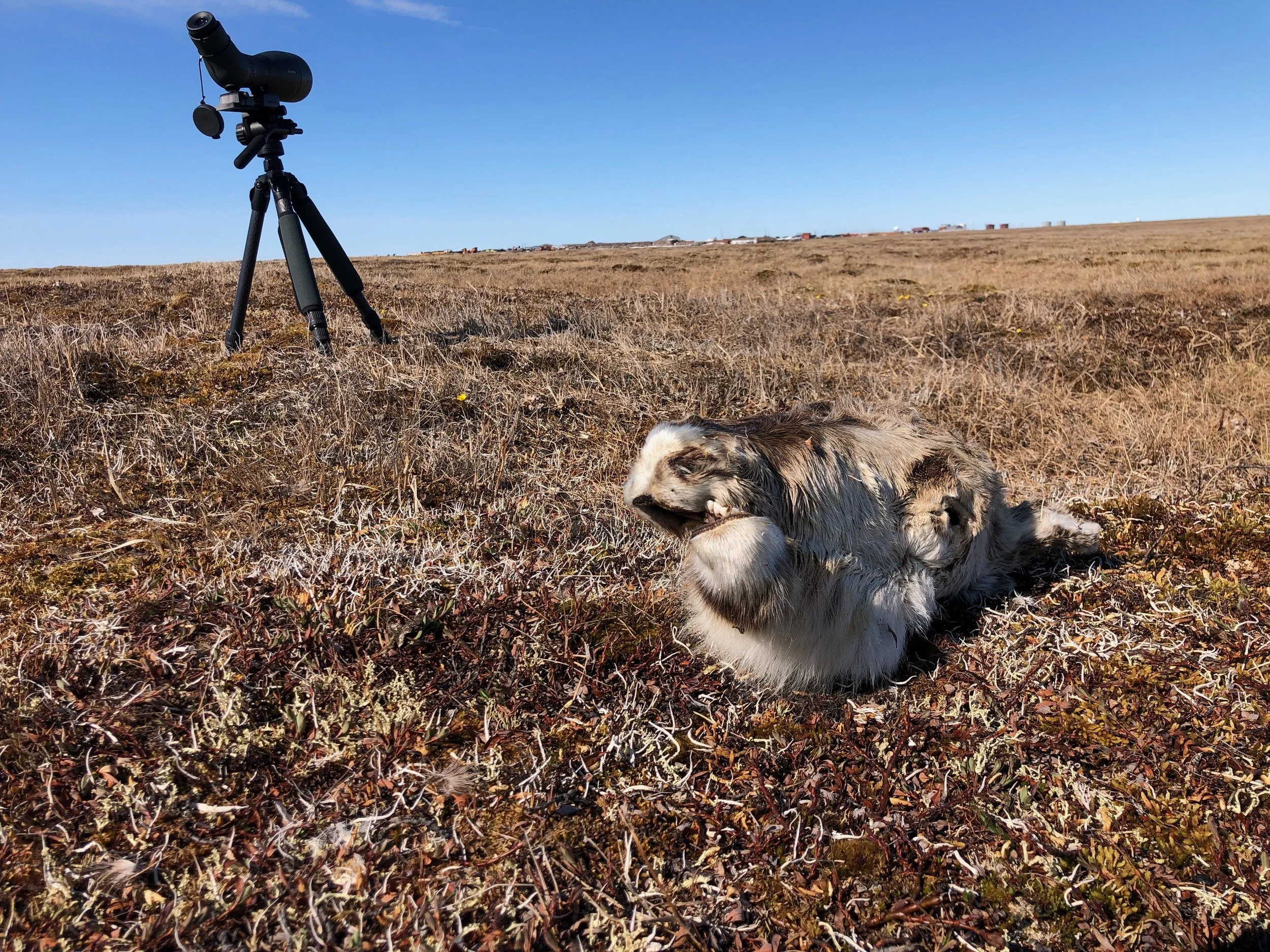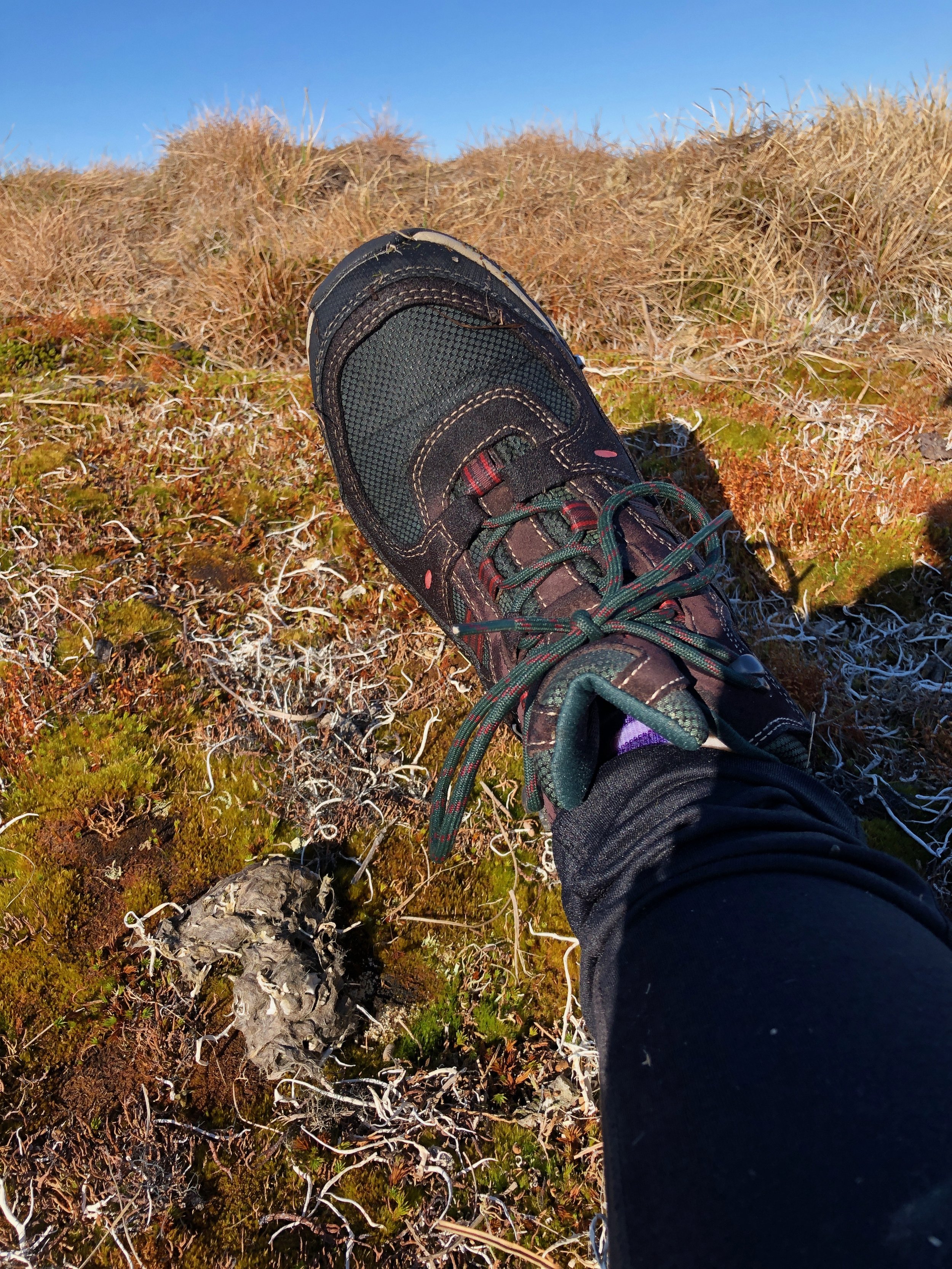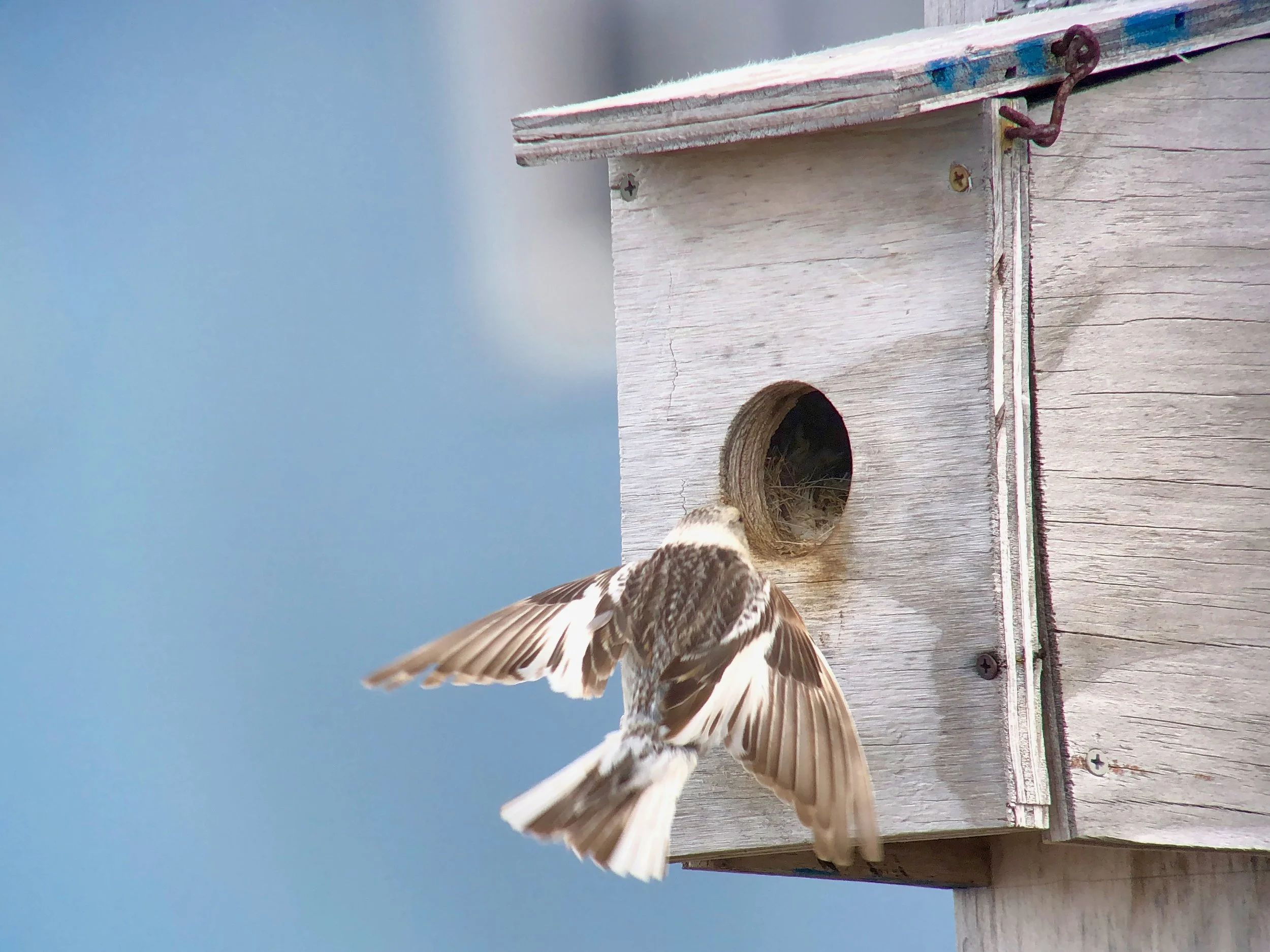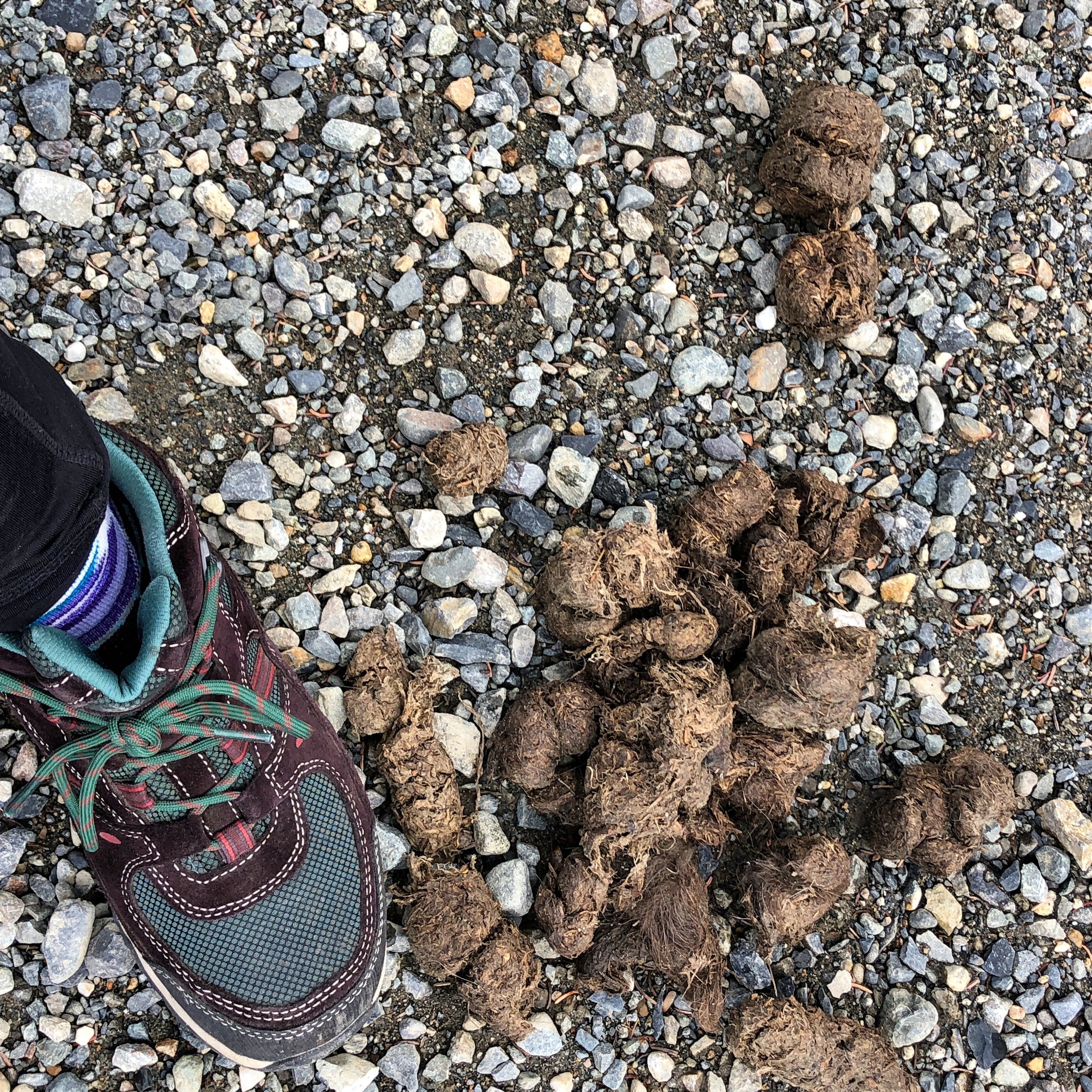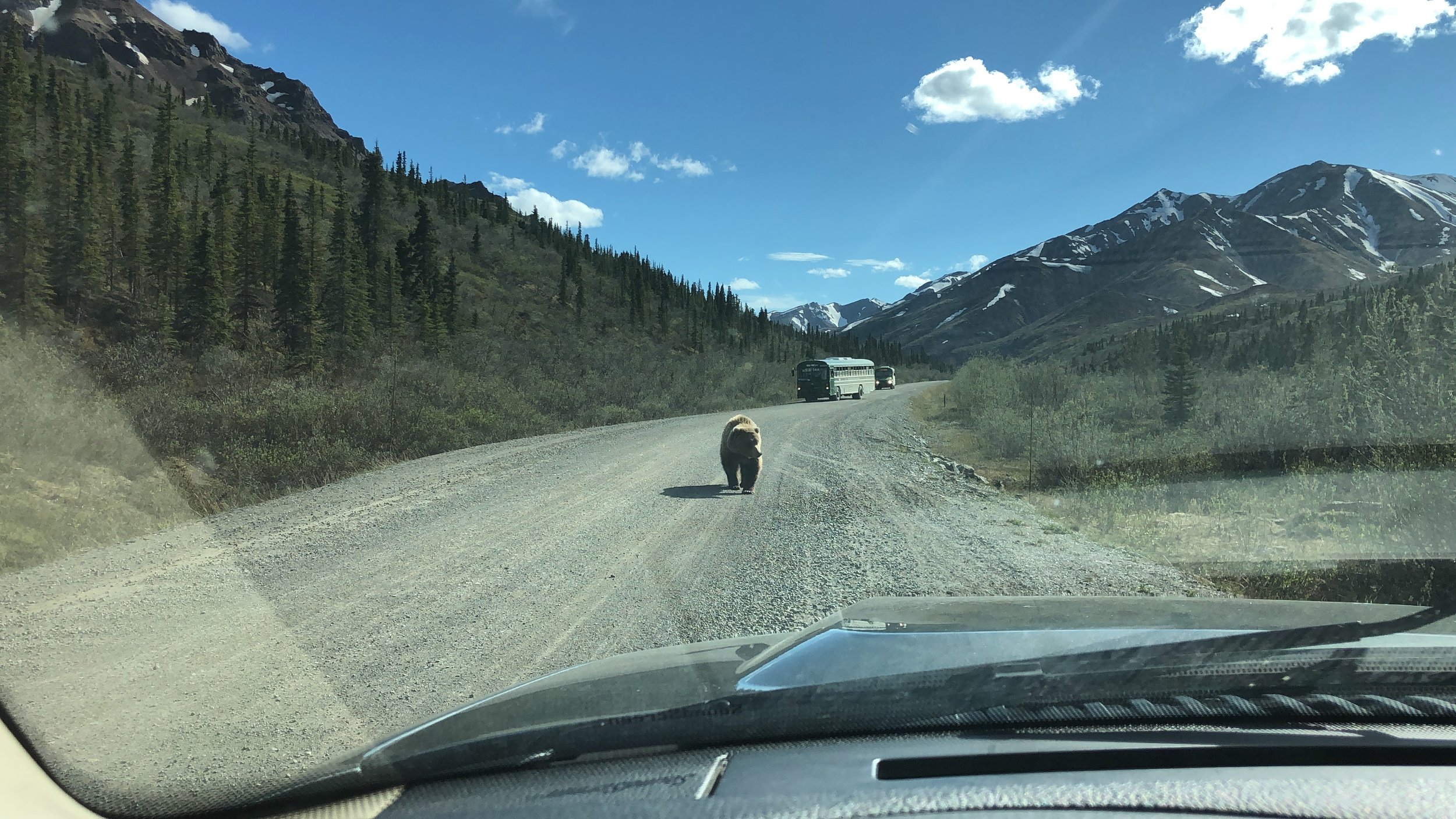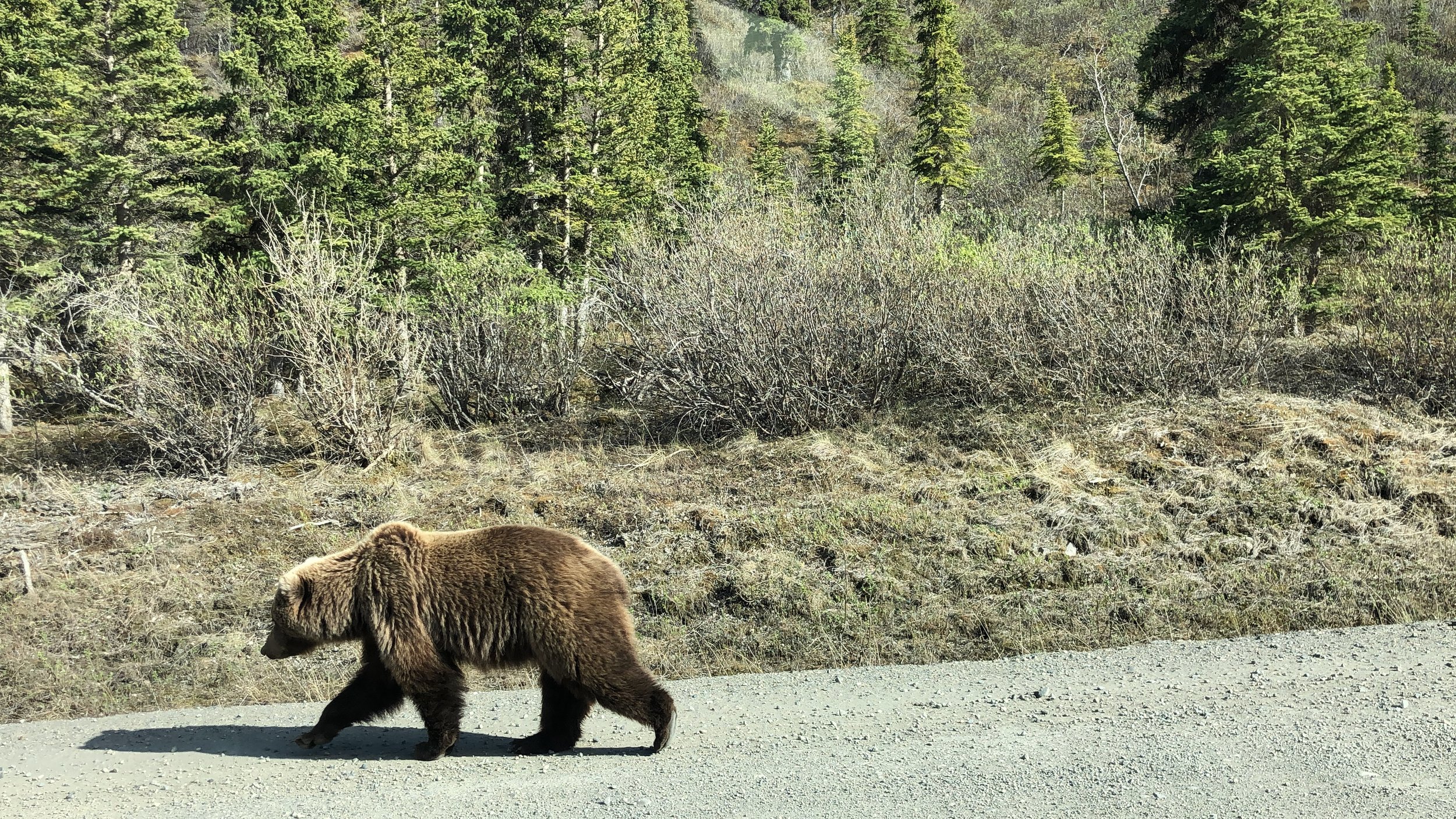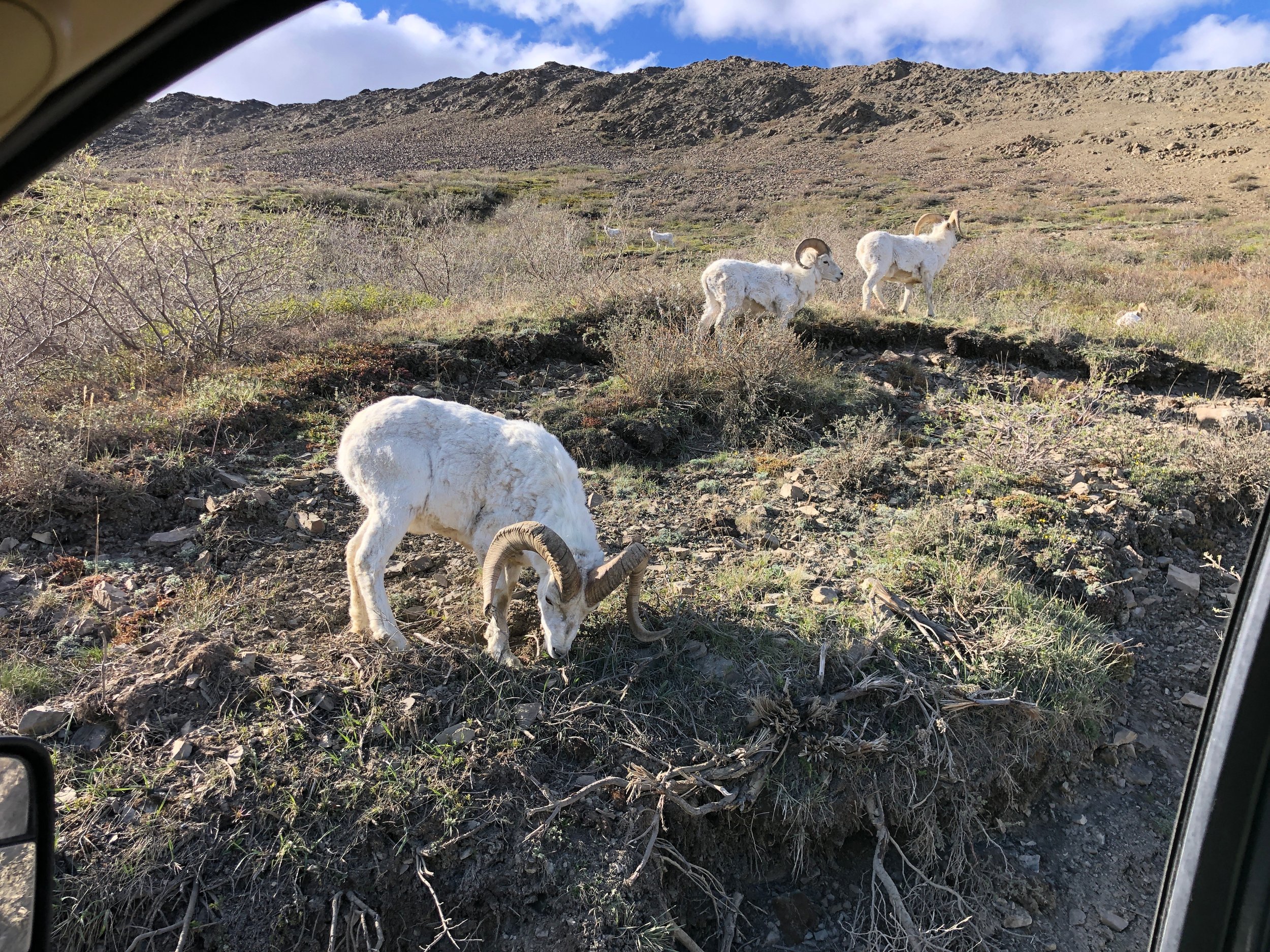Birdchick Blog
Party Pants
A screenshot of Party’s stats from the Denali website.
“The thing I love most about Denali is that it turned Sharon into a dog person.” Katie Nyberg.
For the record, I was always pro dog. I love dogs, I love my friend’s dogs. I just never saw myself as having the sort of life where I could live/commit to a dog. I never wanted to live with a dog, until I met a government dog.
When I blew up my life to move to Alaska to work for Denali National Park and Preserve, I signed up to be a volunteer dog walker for one of their sled dogs. If I was moving to a new state and new park, then I was going all in on the experience. As I was being trained in at the Denali Kennels, the young ranger asked if I wanted to walk a particular dog, the kennels had 30 at the time. I said, “I’m a middle-aged short lady, who would you recommend?”
He said, “I’ll assign you Party, she’s our smallest dog.”
Party on the right with the much larger Gus on the left. (NPS Photo).
Denali names their litters after a theme. Party and her siblings were born in July of 2016, the year of the National Park Service centennial so all the pups got a birthday themed name: Party, Pinata, Cupcake, and Happy. She was their smallest dog, but she was one of their smartest. She was well loved by all for sassiness and little dances she did. Her first winter training on the sleds, staff grabbed a great picture of her sitting on the sled and staring at the musher, it even made it into the Washington Post. All the dogs had their own harnesses for walking and they were labeled since they were custom to the dog’s size. One day while attaching her harness, I noted her true name she had with kennels staff: Party Pants.
Her true name.
Our first selfie after our first walk was very awkward.
Our first few walks were very…professional. She didn’t play with me and stuck to the buisness at hand of sniffiing, pooping, and peeing on our walks. I tried to play with her when we would get back but she would sit on top of her dog house and look as though she was tolerating my presence. Until one evening when I showed up with a tiny morsel of rotisserie chicken in my pocket. After that, we were besties.
One day I heard a warbler on our walk and tried to “pish” at it. She immediately stopped walking and turned to face me. I pished again and she thought it was a weird game and jumped up and pushed me. She eventually learned to sit when I would stop to look at a bird and even became quite adept at pointing out spruce grouse hidden along the Park Road. One of my favorite moments was taking in the sounds of Swainson’s thrushes on our walks in May.
Party and I got along so well, that the evening walks were my favorite time of the day. As soon as I would enter the dog yard, Party would come out of her dog house, running in circles, boisterously bark with excitement for our evening routine. I felt like an amazing rock star every time I walked into the dog yard. My absolute favorite thing that she did when she saw me was turn around, aim her butt at me, and wag her tail while turning her head. I got some video of it one day while I got momentarily distracted by a woodpecker in the dog yard.
Party and I took in the gorgeous landscapes May through September. Often rainbows would appear in the evenings on our walks. I’d tell her about my day. I’d tell my concerns and complaints. I’d ask for advice. She walked and sniffed. In September she would disappear for training and sometimes weeks long sortis pulling sleds in the Alaskan wilderness.
It was fun to watch the kennels staff come through the neighborhoods to train the dogs and get them ready for the season. If we didn’t have enough snow, they’d pull staff on carts with wheels to build up their endurance. One day I was checking my PO Box at the Denali post office and I heard the familiar barking of the dogs nearby. I headed over to the Riley Creek trail and saw the dog truck and some of the dogs tied up waiting their turn for training. One dog in particular got incredibly vocal and was “roooooing” for my attention. And then I saw the small dog turning round and round, jumping, and wagging her tail directly at me.
“I can’t wait to pull a sleeeeeeeeeeeeed!”
These dogs LOVE pulling sleds. They bark and howl with as the equipment gets set up. One morning in winter I went to say goodbye to Party before she would leave for three weeks and she was so excited, she could barely contain herself at the sight of the sled being set up.
As Party and I got closer, friends suggested that I apply to adopt her. Anyone can apply to adopt one of the Denali sled dogs when they retire. Preference is given to people who have a relationship with the dog. Could I adopt her? Should I adopt her? When I took a job with the Forest Service that would move me back down to Minnesota, I was weepy in the kennel manager’s office.
“Sharon, Minnesota is a fine place for Party to retire to,” David Tomeo assured me.
“Yeah, but if it’s better that she join someone’s private sled dog team up here, I’ll understand,” I said.
“She will be nine years old, she won’t have the same energy, she’ll be ready to be a pet when she retires,” he assured me.
So I applied to adopt her and picked my Minnesota home based on its dog friendly building rules, private dog park, and ample trails for both bike riding and dog walking and hoped for the best. I settled into my new Forest Service job and life. Then changes in government happened and I learned that my job would be going away sometime in the future and I should figure out my exit strategy. The same day I learned this, I got a call from Tomeo at the kennels informing me that Party was retiring and I could take her.
I went through so many emotions not unlike Ron Burgundy in a phone booth.
Party’s arrival at the Minneapolis/St Paul Airport.
I had friends come with me to the airport the day Party arrived. My friend Gayle documented the reunion, including my ugly crying at the site of her crate. I was terrified she wouldn’t remember me. When I poked me finger in her crate and said, “Party” she gingerly licked my finger. She seemed to recognize me but she also desperately wanted out. We got her out of the crate and chance to pee and stretch her legs, we walked to the valet to wait for my friend Josh’s jeep that would take her to my place. While waiting, I pished a little like I would at a bird. She immediately turned around and pushed me and then gave me doggie kisses. She did remember me!
BOOP
And now we settle into a new life. There’s lots of adjustment ahead like getting her to trust ceiling fans and feeling safe through thunder. But she thinks beds are the coolest and has made many new friends in our private dog park. With some time, she might even start to play with dog toys. However she wants it, I look forward to spoiling her in her retirement from federal service.
So, lost a government job, but gained a government dog. Good trade.
Red-bellied Woodpeckers used to be called "Chad"
I have a robust collection of bird books and some that are over a century old. I was recently looking over Birds of America originally published in 1917 but I think my copy is from the 1930s. I was just doijng some casual browsing about woodpeckers and came across the section of other names for red-bellied woodpecker:
Male red-bellied woodpecker.
Zebra Bird (looking at their backs, makes sense)
Zebra-back (ok)
Chad (Wait…what?)
Shamshack (OK, now you’re just making this up)
Ramshack (What next, Abendego?)
OK, the “zebra bird” and “zebra-back” are actually better names than red-bellied woodpecker. But I was curious about “chad.”
A chad coming in for a drink while a couple of robins wrestle in the bath.
According to the book, “Chad is also a common appellation in some of the middle western States.” And it goes on later to say, “…upon alighting often gives voice to the harsh, brassy, cry of chad, chad, from one of its local names has been acquired.” That actually makes sense. In my brain I hear red-bellies as saying, chew chew when they give their call, so chad isn’t too far of a stretch…but shamshack and ramshack? I did some mild googling and found another great name, jamjack! The article says that it is also derived from some of the calls that I might call chew chew. So, I guess I will forever be noting chads out my window shouting “shamshack!”
Female red-bellied woodpecker tongue.
Incidentally, as I was doing all this deep diving on the red-bellied woodpecker tonight, I noted that All About Birds says, “Males have longer, wider-tipped tongues than females, possibly allowing a breeding pair to forage in slightly different places on their territory and maximize their use of available food.”
Yes, every woman is thinking about “foraging potential” when they read about a longer, wider-tipped tongue…
Hummingbirds in Late Summer
Hummingbird coming in for nectar as I put this post together.
It has been a crazy ruby-throated hummingbird summer for me. And I’m grateful. Even as I type this on a Thursday evening in August on my deck, a ruby-throated hummingbird is hovering close to my nectar feeder while trying to decide if I’m a threat.
Ruby-throated hummingbird nest digiscoped with my phone and spotting scope.
I was walking around Westwood Hills at the end of July and watched a hummingbird gleaning insects around a water feature. I watched her fly up to a thin branch right over the trail to what looked like a small notch on the tree. I got her in my binoculars, and sure enough she was on a nest. I uploaded a video on Instagram that gives a better perspective of where the nest was.
Two weeks later I came back and sure enough there were two chicks sticking their little heads out.
Baby hummingbirds! If you want to see some baby hummingbird tongue, check out the video on Instagram.
When I knew I was moving back to Minnesota, I checked an apartment complex that was on my old birding patch. I used to pass this place all the time while birding and thought the grounds right on a wetland with a water feature and Joe-Pye-weed looked ideal. When I mentioned it to my husband at the time, he didn’t like the zip code, “That’s St. Louis Park, I have to have a Minneapolis zip code.” We all have our quirks.
But when I was cruising the website while in Alaska looking for a new place to live, I noticed that they named all of their floor plans after birds. Welp. I guess this is fate? When I did the actual in-person inspection, the woman showing me around said, “I’m going to start by showing you the Starling.”
I said jokingly, “I’m not sure I can live in an invasive species.”
“Then I’ll show your the Loon,” she said.
How could I not fall in love with this place? I live in the Morning Dove floor plan—which cracks me up because it’s one of the larger units and the Osprey is a one bedroom. And if you’ve ever seen a mourning dove nest…it’s in no way shape or form a two bedroom.
But I also noticed on the tour that a lot of people had bird feeders—especially hummingbird feeders. Having worked in a bird store, I know how many people do not keep fresh nectar in their feeders and they kind of become a decroative thing that hummingbirds visit for a second and move one.
After I moved in, I put up a seed feeder and didn’t bother with nectar. In Minnesota, hummingbirds pass through the Twin Cities metro area in May and nest out of urban areas and show up like mad in August. May 2 I was on my deck. A female hummingbird flew to my deck, she hovered around the seed feeder, then hovered in front of my face, and then flew away.
“Oh hell,” I thought, “did my previous neighbor have a feeder and was she back from migration expecting the same from me?” The next day on my deck…the same thing happenedd. I’m not a fan of hummingbird feeders because you have to really keep them clean to get the hummers, I prefer flowers, but I also wasn’t in the right state of mind to maintain a proper hummingbird container garden.
But a bought a pair of hummingbird feeders so I could set up an easy rotation system of putting out a feeder and having a clean one at the ready to quickly refill and put out when the current one had the nectar go bad…about two and a half days based on sun angles.
Hummingbird perched on a branch just off of my deck.
She checked it out and sipped demurely.
Then one day with my home office window open I heard a familiar clicking sound. I went to my deck and instantly found the male ruby-throated hummingbird doing his "U” shaped dive back and forth in the tree in front of me. Wow, displaying and nesting right off my deck. I guess it pays birding-wise to have a zip code just outside of Minneapolis.
Now she and her offspring visit my feeder and periodically engage in some fun aerial jousting and I will keep my hummingbird feeder rotation going until the ruby-throats move on sometime in October.
In many ways I feel like I’ve had a “basic bitch” birding summer. I haven’t chased rarities, but just delighted in the common Minnesota birds I missed so much while I was in Alaska. And I’m grateful for the hot hummingbird action I’ve had at home and at Westwood.
Fall Migration Is On
I really missed fall migration while living in Alaska. Yes Alaska has fall migration, but it was all too brief. In Minnesota migration lasts months with shorebirds popping up as early as late July. But really it starts in August and depending on when lakes and rivers freeze it can least into early December.
While birding at Westwood Hills this week with my friend Kara, we watched dozens of common nighthawks fly over at about 5 pm, feeding and beginning the journey south. Yesterday, while working, I noticed a warbler flitting in the tree and got my binoculars on it. It was a young, hatched this summer Tennessee Warbler.
The view from the Rock Creek Trail inside Denali National Park and Preserve. I could walk out my front door and hike this regularly.
I knew I was in trouble in Alaska my first fall. The park starts to shut down mid September and if you live there, you practically have it to yourself. I decided I was going to hike a trail out my front door called the Rock Trail daily until the weather stopped me. I have seen many autumns, but none as spectacular as in Central Alaska. And after a few days of this plan, I realized I was bored on the hike and I couldn’t figure out why. What was wrong with me that I thought that view above was boring? And then I realized what was happening, I wasn’t hearing anything. No birds, no crickets, no katydids, nothing. Dead silence , and then I realized all the birds had left. There were a few cranes and swans flying over still. But the waves of warblers, waterfowl, sparrows, that I’d come to expect over many months in Minnesota they had all left already. Of course, I knew from reading books and articles that breeding seasons were fast and furious in the Arctic. I was living in the Sub Arctic…less than 330 miles south of the Arctic Circle. I realized that it was going to be months of silence…It was late September, I wouldn’t really hear birds again until late April…over six months away.
Boreal Chickadee
That’s not to say there were no birds. Boreal chickadees, magpies, and Canada jays were around. The first winter didn’t have much of a tree crop so I didn’t really see any crossbills or redpolls. I wasn’t allowed to have a bird feeder where I lived because park rules and grizzly bears so I could easily go days without seeing a bird.
On Saturdays in winter, I’d drive the sixteen miles to Healy to visit the grocery/hardware store/gun store/convenience store/liquor store known as Three Bears to watch the parking lot ravens as a form of desperation birding. Often, I’d buy a bag of walnuts to toss out to them.
My first Christmas Bird Count only had three species. The second one had more thanks to it being an irruptive year for finches and grosbeaks. Side note: the upside to a CBC in Alaska is that there is so little daylight, you count starts around 10 am and only lasts about four hours.
Wood thrush coming in for a bathe.
So looking at the calendar and realizing fall migration is on, I’m going to take it all in and enjoy it for as long as possible. Warblers are already moving through in Minnesota, and it won’t be long until we see even more nighthawks overhead, and wood thrushes (like on above) will be passing through our yards. We still three more months ahead at least and I intend to savor it.
What? I'm Out of Alaska? Yes
Did you catch me on Almanac tonight? Confused because you thought I was in Alaska? Life is weird and if someone told me on January 1, 2019, “Hey, you’re gonna get divorced, live through a pandemic, and then live in the remote Alaskan wilderness but be back in 2024,” I’d have thought they were nuts. But here we are. Denali was a great time but I now have a job with the Forest Service that puts me in Minnesota.
So what were the things I talked about tonight?
The heron rookery at Marshall Terrace Park. You can read some of the history of the rookery here.
If you want to catch some Alaska stories, I’ll be part of the storytelling group at Cheap Theater at the Black Forest in on April 20 at 7 pm and I’ll be one of the speakers at the Indiana Dunes Bird Festival in May.
More will come here as I settle back into the land of strong internet and grocery stores in walking distance.
Whimbrels of the Sub Arctic in Denali
What, this blog still works? I know, I blew up my life, moved to Alaska and now all of my writing and creativity goes to a national park.
There are so many birds that I’ve seen and enjoyed over the years, but in many ways I didn’t truly appreciate them. There was a conversation between two men where one said that the outdoors is so much more enjoyable when you what things are. The other man got very defensive and said that he enjoyed the outdoors just as much as anybody and he didn’t need to know the birds, flowers, or trees.
I firmly disagree and the whimbrel is an example of that just being aware of something vs knowing it, is life changing. I know what whimbrels are, I’ve seen them in many places in the Lower 48 of North America. In the grand scheme of shorebirds, they are one of the easier to identify and quite charismatic looking.
This is a whimbrel that I got a photo of while filming a pilot for a birding reality tv show in LA. No, that’s not a joke.
PROOF, took this photo while the whimbrel was about 50 feet away. FYI reality tv shows aren’t scripted, but please note the paper the guy in the middle holding…
I’ve been trying to find photos that I’ve taken of whimbrels and figure out where I was when I took them. I feel like my first whimbrel was exciting but in those heady early days of my birding when I was getting lifers left and right and not quite paying attention to the first sighting because I was getting so many firsts at once. A few photos that I’ve found were from a reality tv show pilot that I filmed, right about the time my book 1001 Secrets Every Birder Should Know came out.
Whimbrels have a crazy beak, not as crazy as a curlew, but still pretty darned distinct. But where whimbrels really got my attention was as we started to study their migration patters and could put transmitters on them to really get an idea of their crazy flights to and from breeding grounds.
Whimbrels on wintering grounds eat quite a few fiddler crabs and it’s thought that the long decurved beak helps them get into their burrows.
In 2009, four whimbrels were tagged by researchers from the Center for Conservation Biology at the College of William and Mary in Virginia on their southward migration. The following spring, one bird left Virginia and flew to Alaska, traveling 3,200 miles in about 6 days in what looked to be a non-stop flight. Before that, we didn’t know that whimbrels on the east coast of the United States would end up in Alaska. Here’s a pretty amazing migration map based on some of those trackers.
But in 2011 the study showed how these birds managed hurricanes but also the many threats that they face. One bird known as “Chinquapin” successfully flew into Hurricane Irene and survived. A bird known as “Machi” flew through Tropical Storm Maria and another knowns as “Goshen” flew through the east side of Hurricane Irene, both eventually landed on Caribbean island of Guadeloupe and were legally shot as part of a fall shorebird hunt. You can read more on the William and Mary website.
I’m told that whimbrels were seen regularly along the Park Road in Denali. I haven’t seen that, I have had a couple of flyovers on the Denali Highway, but haven’t really seen them around where I live now—especially not nesting. One of the things I love about working here is the rich knowledge of the biology staff. There’s lots of careful research and a push/pull of keeping wilderness wild and allowing visitor access. There’s a known decline of whimbrels nesting on the Park Road, but is that a matter of traffic…or loss in other areas like migratory and wintering habitat? Pressures of unregulated shooting? Storms that are impossible to navigate?
Braided river bed off of the Park Road, the only road that goes into Denali National Park and Preserve.
So when some friends told me they were out hiking in Denali about seven miles from my place and had what they thought was a whimbrel, I went out looking for it. Working and living in a park that is roughly the size of New Hampshire (roughly six million acres), its hard to get bored. There aren’t many trails in the park and you are allowed to hike off trail. Sometimes that’s a challenge for a five foot woman navigating willows about as tall as me where I could surprise a grizzly or moose but I always pack bear spray and talk to myself to prevent surprising anyone.
Denali National Park and Preserve is over six million acres in size, roughly the size of New Hampshire. There is only one road through the park and right now, it’s cut off at the halfway point because that part was built on a rock glacier, the ice melted and the road slid away. I took the dry, rocky bed about a mile and a half to Jenny Creek. It was mostly shallow but with my short legs, I was going to have deep areas of very cold water.
Jenny Creek where I could already hear a whimbrel yelling on the ridge on the other side of the creek.
I always calculate the risk and wonder if it’s worth it. I especially do that living in grizzly bear country. I saw the deeper part of the creek, observed the slow of the water and if I could safely navigate it, and noted the steep side of the ridge vs the gradual. Which had more willows to traverse. It looked like the shallow portion of the creek had fewer willows, but a much steeper climb. The deeper part of the creek had a gradual climb, but more willows. Not going to lie, I entertained just keeping with the easy trail fo the dry river bed and forget the whimbrel…then I heard it calling from the top of the ridge, a bird siren song I can’t resist and opted for the shallow end of the creek with the steep hill.
I opted to bring my hiking poles for this trek and so glad that I did since that made the steep grade of the ridge so much easier to climb. The hilarious part is that I later learned my phone took video from my pants pocket. I can hear myself heavily panting and verbalizing my inner monologue to prevent surprising a bear or moose: “Thank you, past Sharon, for bringing hiking poles, good call. pant pant pant. Yo moose, yo bear. pant pant pant. Just a short lady walking through the willows. pant pant pant. Not interested in hunting today. pant pant pant. No cubs for me today. pant pant pant. Come on, old girl, you got this. pant pant pant. Almost there. pant pant pant. Short lady in the willows. pant pant pant”
Whimbrel flying over breeding territory.
The whimbrel started calling more and I started mimicking its call back to the best of my ability which wasn’t great. But I could make it loud enough that I wasn’t going to startle moose and I was doing it poorly enough that whimbrel clearly knew I wasn’t a rival for territory.
My favorite shot of the whimbrel. It’s not Nat Geo material, but I love it because I get a sense of its breeding habitat.
I eventually made it to top without being mauled by a bear and it was a gorgeous view and a lone whimbrel watched me warily and occasionally called. I sat down and took a breather, ate my lunch, gave the whimbrel time to see that I wasn’t a threat and it went on to foraging. There didn’t appear to be a second bird or even chicks, but the bird clearly acted like it was on territory. They should have chicks at this point.
View from the top of the ridge. The dry river bed below is what I used to hike to the area.
I took some time to just soak up the weirdo life I have now. Birding in Interior Alaska is so different. It’s not like living in Minnesota where a short drive will net me 50 species and lots of opportunities for photos and videos. In the winter, it’s downright BLEAK and there are days when I will see or hear only one species of bird a day. If the roads are nice enough, I’ll drive the 16 miles to the Three Bears parking lot to look at ravens out of desperation for anything live bird related.
But even in summer, it’s still not the hoards of birds you think of May and June in the Lower 28. My walk up to the whimbrel spot got me 8 species of birds. Lovely birds like fox sparrow and Wilson’s warbler but it’s not the same as being on a coast. But I’ve learned to savor the time I have with birds in the summer and especially in the case of shorebirds, get to know them in a completely different way—some of them even perch in trees! The whimbrel has its wintering grounds version of itself and its breeding grounds self is different. On the wintering grounds, they eat lots of fiddler crabs, up here…they’ll eat berries. What? A shorebird eating berries? Madness.
And to a certain extent, living up here is doing the same to me. Alaska Sharon is different than Minnesota “Birdchick” Sharon, simply because life up here has so many challenges. In some ways it is exhausting: calculating daylight, chances of hitting moose in the dark, how passable roads are and do I really need a salad that badly in February…couldn’t I just keep eating the canned carrots and frozen broccoli? But in other ways it’s so crazy weird and beautiful like the time your neighbor asks if they can swap you five pounds of roadkill moose in exchange for your bottle of Prosecco (that was an excellent trade).
A snippet of whimbrel breeding habitat.
I opted for the walk back to take the less steep slope of the ridge and the deeper end of Jenny Creek. It was in the upper sixties and mostly sunny which in the land of non stop daylight, makes for warm hiking. The cold creek felt good on my feet and thighs. I made it back with glimpses of caribou but no moose and no bears—which is fine. My preferred encounters with those species is from a vehicle and the moose are so thick in my neighborhood in May and June, I’ve had enough.
If you’d like to read more about whimbrels, do check out All About Birds and if you really want to find out who much we don’t know, check Birds of the World (that requires a subscription but is so worth it.
My Latest Book: North American Birdwatching for Beginners
Last fall I got an offer to write a book. The money solved a financial problem for me and I agreed to it. I wasn’t sure that the world needed another beginner bird book, but it needed to be written, the process intrigued me, and I’d had a serious case of writer’s block during the pandemic and was finally crawling out of that hole.
I like deadlines, they give me focus. But like any writer, there comes a point when you realize you had some ideas for part of the book and no ideas for the other. And first drafts are for vomiting it all out on paper, no matter how messy it is and a good editor will help you fix that in subsequent drafts. So I wrote the Canada goose profile for a book and thought, “I’m sure the editor will make me fix this later, I’m tired and want to turn this in.”
They did not.
And I put this on Twitter.
When you write a book and it comes out, publishers want you to promote it. I’m in the process of starting a new job and moving to Alaska…all with a book coming out. So I put up a flip tweet about a flip comment I made about geese and it went VIRAL AF. Yay me for efficient marketing at a time when I have too much going on.
So the short of it is, I wrote a beginning birding book. If the above made you giggle and you think a non birder in your life would like to learn more about birds you can order North American Birdwatch for Beginners.
Because this book is coming out as I’m moving, I don’t have autographed copies now. Since shipping books to Alaska and shipping them to you might make them more expensive than they need to be, I may look into getting stickers that I can personalize to send out. I won’t have a good answer for this until mid-May.
Snowy Owls on Breeding Territory
Female snowy owl perched on a building at the MSP Airport. How I normally see them every winter.
Snowy owls are something I regularly see in Minnesota. The Minneapolis/St Paul Airport gets a few overwintering every year. I’ve always wondered what it was like to see them on their breeding territory up in the Arctic, especially as I’ve followed Project SNOWstorm and all they have learned about snowy owl seasonal movement. When I headed up to the Arctic portion of Alaska last summer with Zugunruhe Tours, I got my wish. Fun fact that I learned about the name of the town formerly known as Barrow?
Standing at the town sign! Wait…what does that sign say?
According to the sign, this town’s name means “the place where we hunt snowy owls.”
What some people in the US know as the town of Barrow, AK is now called “Utqiagvik” which is a recent spelling of the town’s ancient name “Ukpiagvik.” According to the town sign the name means, “the place where we hunt snowy owls.” I chuckled when I read that. This sign made me think of how in the winter when snowy owls arrive, the “Owl Police” get riled up about how close people get to snowy owls. What would they think of the traditional town name?
I had a conversation with my friend Mark Martell, a biologist about snowys. “These poor things, they come down south and there are all these trees, that has to be confusing. They must wonder how to find anything.”
“Or,” Mark said, “they think, ‘This is GREAT! We need some of these up in the Arctic! I can hear and so so much futher!”
Fair point, Mark.
Utqiagvik has short buildings and no trees.
Looking around the town, I could see how it kind of resembled an airport. Some of the building are hangar-like, lots of open space, and trees. It’s right on the Arctic Ocean so lots of opportunities to hunt right on the sea ice.
Even though I was technically in the United States, it still felt like a foreign country because life is so very different there. There is no road to the town. You cannot just drive up with your trailer. You can only get in by boat or plane…and based on weather, that’s not a guarantee you’ll get in or out on the day you planned. Anything people need that is not in the immediate area has to be flown or shipped in. Conversely, anything you don’t need anymore also has to be shipped out. Car has broken down? Do you pay to have it shipped away or let it stay where it is. Along with that, it’s not easy to get food in and out. Really want to those fresh delicate fruits and vegetables…not an easy option. Avocado Toast isn’t a thing. Because of that and the Alaska Native population, there is subsistence hunting that helps people get through and they hunt what they need to in order to survive. Hence the sign about what the name of the town means.
Palm trees made of baleen from whales.
Signs of subsistence are everywhere. Some yards took leftover baleen from whale hunts and turned them into “Arctic palm trees” or other decor. The town was preparing for a Solstice festival while we were there and chunks of whale could be found as people took it out to thaw. It was fascinating to be in that world and learn how survival is very different in this part of the United States.
The town sign with a snowy owl did not over-hype and despite its meaning, there were owls around town! As I headed out of our hotel to our truck for the day’s birding, one of the other participants pointed to the cemetery next door and noted the snowy owl perched on one of the grave markers. A man and his dog walked by flushing the owl, but it soon returned. Our guide took us on a road closer to the cemetery so we could get photos. It was a stunning adult male male snowy owl.
Snowy owl perched on a grave marker.
But not only were they in town, we saw them as we hiked the surrounding tundra. We saw many snowy owls, one day we saw about six at the same time. They were far away and spread out, but that is the nature of the tundra—you can see for miles. Even though some were far away, I could see in my scope that they were active and getting mobbed my shorebirds. What a treat!
Our guide was very careful to keep us away from nests while we were out on the tundra so we weren’t trampling young or disturbing birds on eggs. But one day as we were hiking the tundra and enjoying the Arctic sun, our binoculars found a light floofy thing through binoculars. We both said, “Uh oh” at the same time. I looked at the guide, “Is that…what I think it is?”
“I hope not,” he replied. We were worried that we had in fact wandered toward a snowy owl nest. I got my scope on it and was relieved to discover that it was not a snowy owl chick. I walked over to get a better photo of what we saw.
Just a random caribou head. Oddly not the weirdest thing we found on the tundra, that would have been the random hunk of whale meat.
Snowy owl pellets.
Exploring Alaska wilderness is very free form. In many places there really aren’t any trails to follow, you just journey out. The tundra is a spongy wonderland and sometimes you end up in a puddle. As much as this post is about snowy owls, the real fun we were after were all the eider species. As we would work our way towards ponds to get closer to the ducks, we would use small rises to hide our presence. One of my best memories is hunkering behind a rise while a spectacled eider got used to me. The light was tremendously golden at 1:30am in the morning and pectoral sandpipers and snow buntings are singing all around me. I’m high enough on the vegetation that I can sit without my butt getting wet from the spongy ground. I stretched out my feet to enjoy the moment and that’s when I noticed the snowy owl pellet next to my boot. There was also some old white looking streaks of poop. Sometime not too long ago a snowy owl had perched here waiting for prey, digesting its previous meal. I love finding owl pellets and to find them on the tundra similar to how I might find great horned owl pellets in the woods totally delighted me. This pellet was chock full of lemming.
Snowy owl in a Minnesota corn field.
I now have a perspective when I see snowy owls in the lower 48. If you ever have the opportunity or find a bird tour company that will take you up to the Arctic, I highly recommend it. The snowy owls are cool and they are just the tip of the iceberg (ha ha) for all the fun that can be had. But what a treat to see these birds hunting and living in their breeding habitat.
Snow Bunting Nests
Snow buntings flying around a remote road in Aitkin County, Minnesota.
Snow buntings are a fairly regular appearance in Minnesota in winter. It’s one of the birds I will watch for on the way to the bog or birding in the southern part of the state. They are generally in large flocks, skittish, and far away. You’re basically driving down a country road and a bunch of white birds with patches of beige burst off the side of the road as you pass.
Male snow bunting singing on a telephone pole in Utqiaġvik formerly known as Barrow, AK.
In the Arctic Circle, snow buntings are everywhere, practically yard birds and not so skittish. Part of the appeal of working in Alaska for a summer was the chance to explore the state further (I’ve birded Anchorage and Homer), and especially in the Arctic Circle with the hopes of seeing birds like snow buntings, shorebirds, and snowy owls in their breeding range.
When I landed in Utqiaġvik formerly known as Barrow, the northern most point of the United States, the first bird I heard singing loudly was a snow bunting warbling away on top of the airport hangar. They became one of my favorite songs of the trip. Males in breeding plumage are such snazzy looking birds. I immediately fell in love.
Here’s a video I took with my phone, Swarovski scope, and PhoneSkope case so you can hear the song of the snow bunting…and get a sense of the tundra and Midnight Sun:
As we drove around the tree-less town, I noticed people had bird boxes in their yards. That was puzzling to me because the tundra is known for not having trees. What possible bird would use a birdhouse or nest box here? Starlings are in the southern part of Alaska but nowhere near up in the Arctic. House sparrows have managed to not get a foothold in the state of Alaska yet. So…in the land of no trees and no woodpeckers, what bird would evolve to nest in a cavity? What cavities would there be? I soon had my answer.
Female snow bunting in a nest box.
Snow buntings used the nest boxes. It never dawned on me that they would use a bird house. But how and why, I wondered. I hadn’t read their nesting section in Birds of the World before I left for the trip. I think I assumed birds in the Arctic were all some form a ground nester.
Lemming tunnels and trails on the edge of of town.
It turns out that there are cavities in the tundra, in the ground made by lemmings. Lemmings are EVERYWHERE and I mean EVERYWHERE. One of our tour participants gave a squeak becase a lemming startled her when it ran over her foot! I did eventually find some snow buntings using an actual lemming tunnel as a nest. I got some slow mo footage with my iPhone attached to my Swarovski spotting scope for some footage. Because it’s slow mo, I cut out all the time she was actually in the nest feeding or this video would be five mintues long.
I did my trip up to Utqiaġvik/Barrow with Zugunruhe Birding Tours which I highly recommend if you like a small group experience.
Birding The Park Road in Denali National Park
Three-toed woodpeckers were regulars outside of my cabin.
I paused my bike ride for some grizzly poop on the Park Road.
Denali National Park and Preserve is about the size of New Hampshire and has one road known as the Park Road that’s about 92 miles long. Most of it is accessible only by transit or tour bus, foot, or bike. I biked some of it while I worked there last summer. One day while I was biking I found some grizzly bear poop. Whenever I posted a picture of bears or bear poop I would inevitably get texts or comments warning me to be careful of grizzly bears so I began including, “Yes, I have bear spray” in every dispatch to family and friends.
This particular patch of poop was right before Sable Pass. About a week after getting this photo while biking there, I was driving through that spot to a meeting. I was recalling my bike ride when I noticed to buses stopped in the road with a large lump lumbering in front of them:
Grizzly walking towards my vehicle.
A transit bus and a tour bus where coming from the opposite direction and had a grizzly bear in front of them. I pulled over and let the situation play out. I had never seen a grizzly bear until I came to Alaska and couldn’t believe I was having a quintessential national park experience of a bear walking past my vehicle. I kept my eyes on the bear but whipped out my phone for a souvenir video.
Not digiscoped. Just right outside my vehicle window.
I love how the bear does not make eye contact with me. Bears are like people, they like the established trails and roads, like us they appreciate the path of least resistance. Also the road is chock full of Arctic ground squirrels which are a tasty morsel for a grizzly. This bear was clearly communicating, I’m just passing through, not making eye contact, just goin’ about my bear business, please leave me alone and things won’t need to get very real.
Not unlike me when I’m in downtown St. Paul in uniform. Just trying to grab some tacos, not ready to answer questions about fishing permits or parking (not that I can answer those anyway, but people always assume I know when in uniform).
Currently, part of the road is being rebuilt because a section is on a rock glacier (it’s more rock than ice) and it’s melting because Climate Change. There’s some amazing time lapse footage of what’s been happening on the Denali website. I actually got to drive that section of road before the latest landslide and it was terrifying to me. I drove out on the side against the mountain. I wondered how I was going to drive back to my cabin and be on the cliff side that has no railing. I can’t believe busses would pass each other on that section of mountain pass, but they did on a daily basis.
When I arrived for my meeting, I told the first ranger I saw, “Polychrome Pass is terrifying. I don’t know how I’m going to drive through Pretty Rocks to get back.”
He laughed, “Oh yeah, I remember my first time.”
I said, “I’m serious. I don’t think I can drive back on my own. I live here now.”
”Ohhh,” he said. “I’ll take you out and give you some cliff driving tips.”
Transit and tour busses passing each other along Pretty Rocks. Photo from the Fairbanks Daily News Miner.
I have now been over Polychrome Pass many times. One day I was with a coworker and while she drove, I took a video of what it looks like to drive that section. Alas there was no gyrfalcon perched here that day, but you could see where one had perched based on the white wash.
Eurasian wigeon mixed in with American wigeon at Wonder Lake. It was fun to self find this bird that I have seen so many times in Europe.
Birding the park reminded me quite a bit of northern Minnesota: boreal chickadees, black-backed woodpeckers, three-toed woodpeckers, goshawks blasting through, Canada jays, redpolls, crossbills, spruce grouse and oodles of ravens. There are other exciting birds there like willow ptarmigan, Arctic warbler, and northern wheatear. It’s crazy to me that Alaska is situated to not only get migrants from Central and South America, but also southeast Asia.
If you are a birder hellbent on getting ALL the lifers in a weekend, that’s not going to happen. Birds are spread out and some are only accessible by trekking off trail into wilderness. I was there for three months and didn’t get all the lifers I could have. I had quality time with quality birds, but there is A LOT of hiking (not necessarily on trails) to get to some of these birds. But you get stunning views and very interesting mammals.
Dall sheep out my window as I was on my way to a meeting.
They say if you see Denali mountain at all that you are a “thirty percenter” because it’s usually covered in clouds. If you see it without any clouds covering the mountain at all then you are a “fifteen percenter.”
Denali is definitely worth a visit, just for the sheer grandeur. But birding itself is better on Denali Highway which isn’t in the park. But that’s another blog entry for another day.
Incidentally, I’ll be working permanently for Denali in the near future. So I suspect that more Alaska bird blogs entries will be forthcoming.
Below are some of the birds I saw while out and about in Denali.
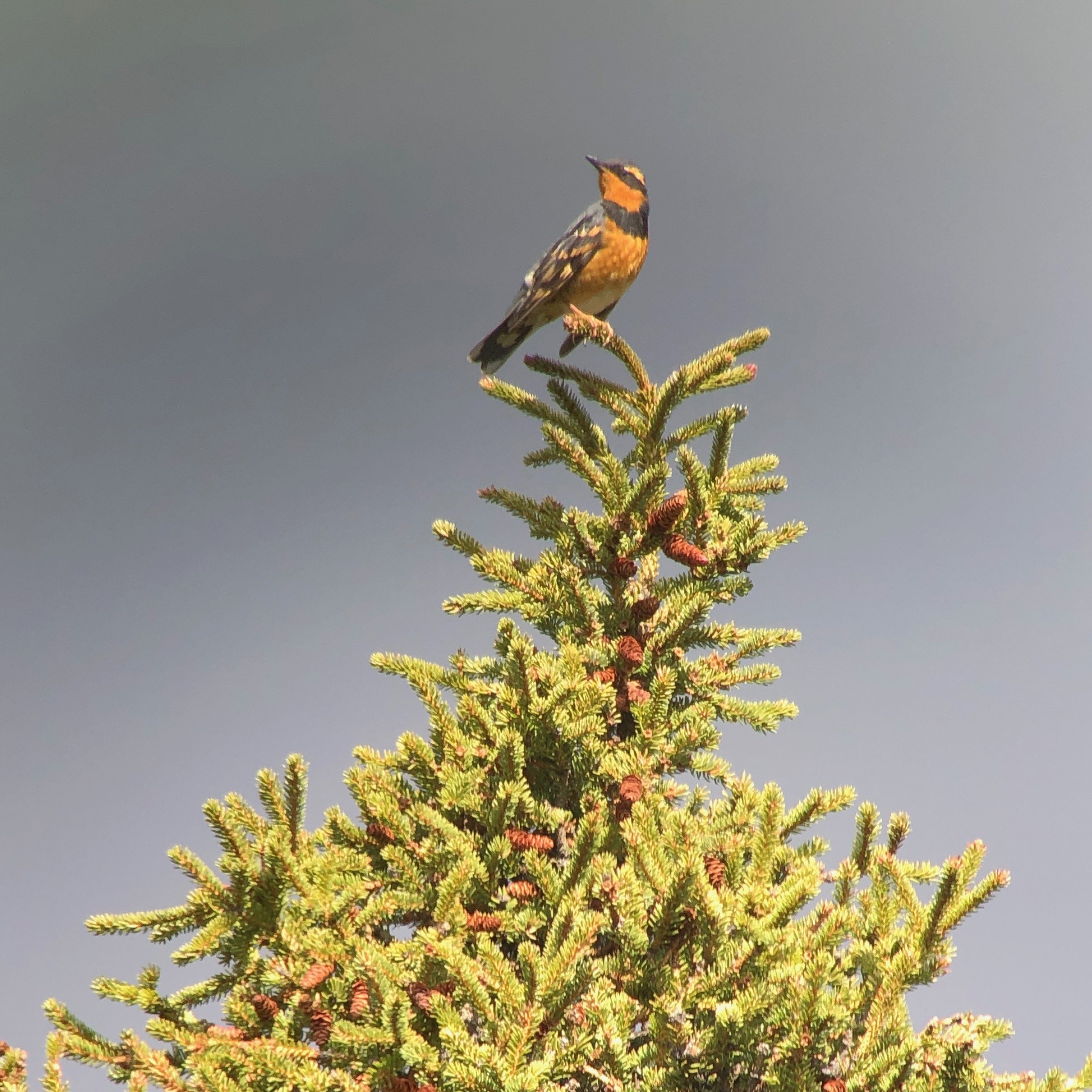
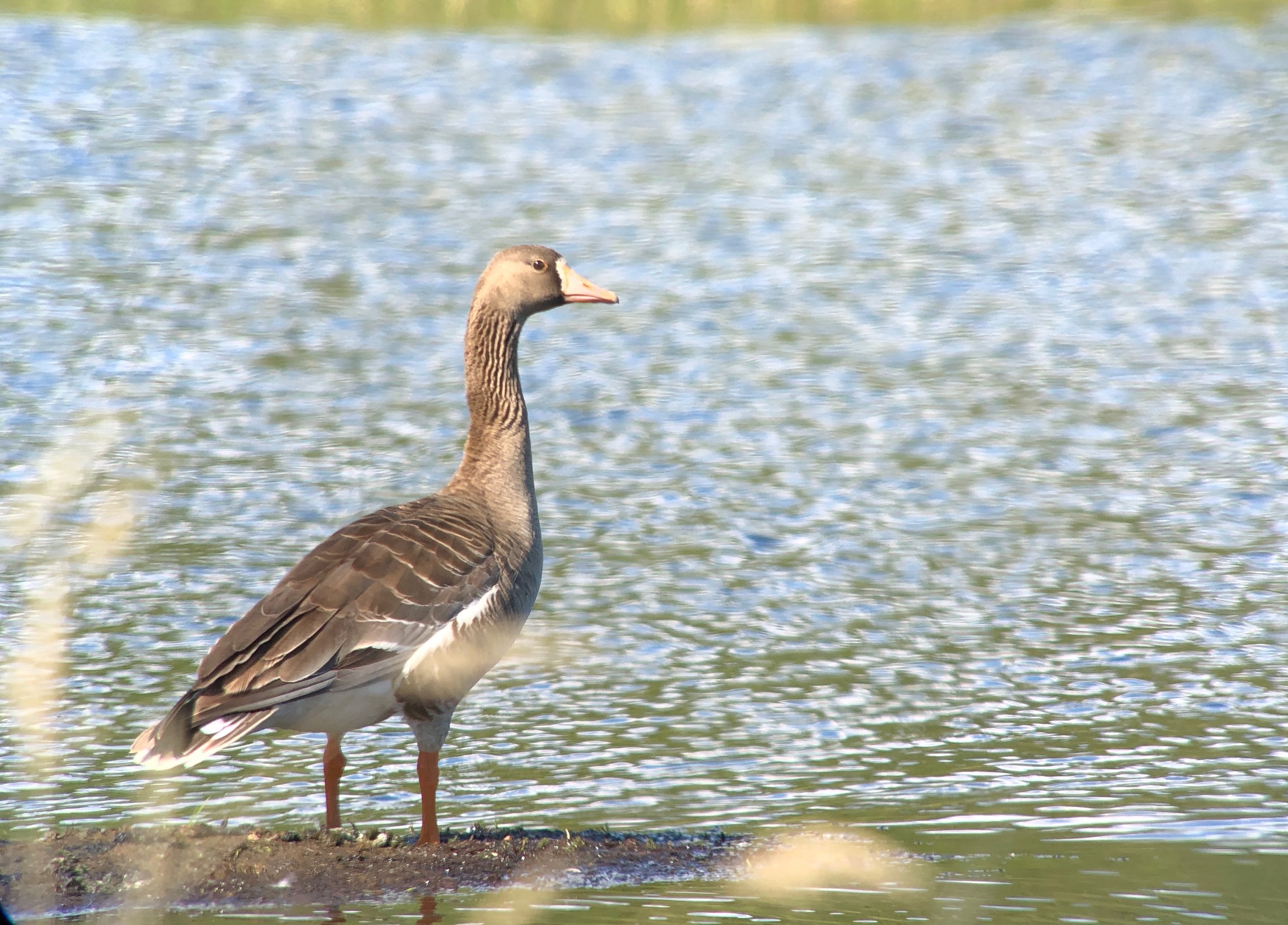
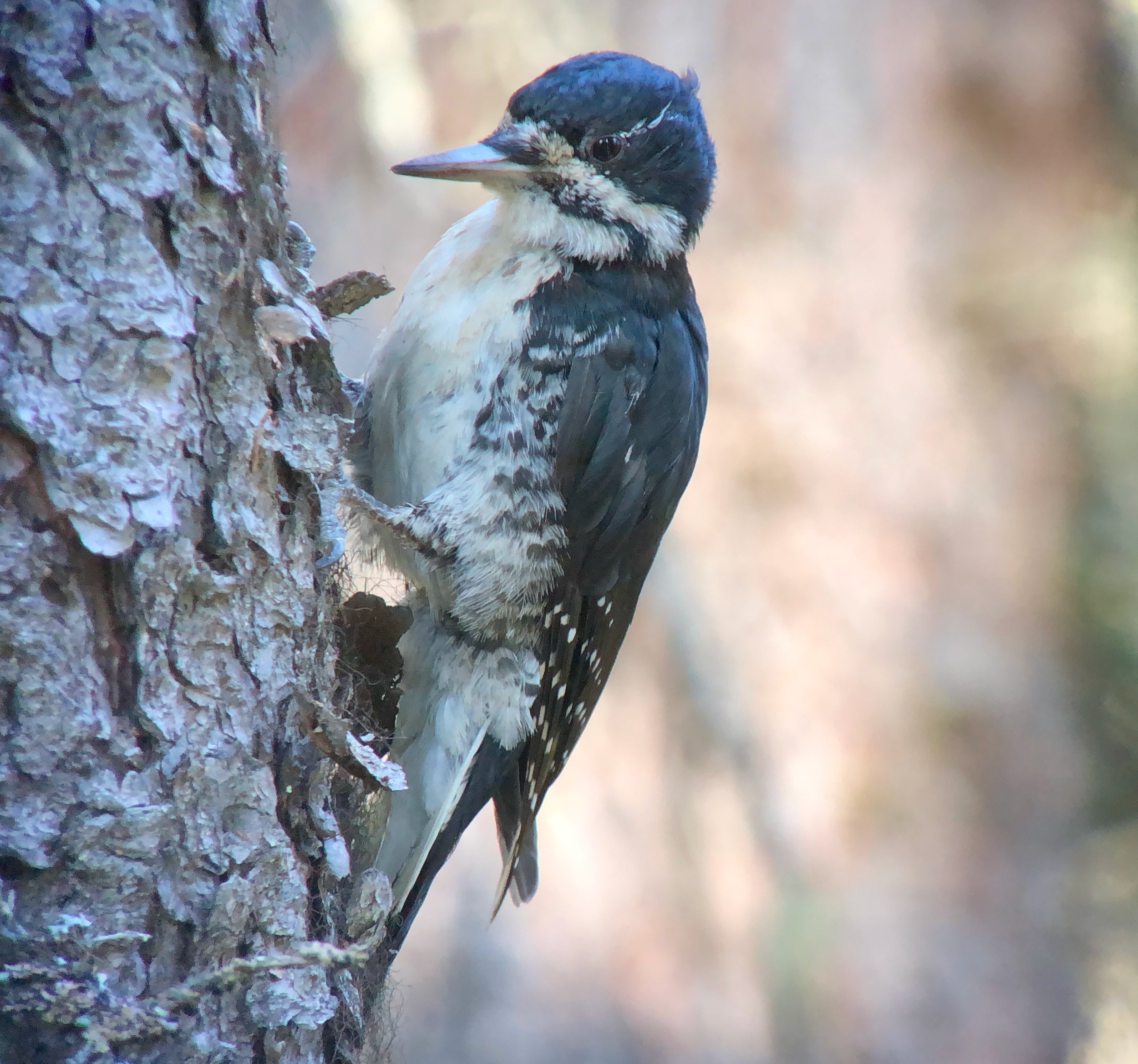
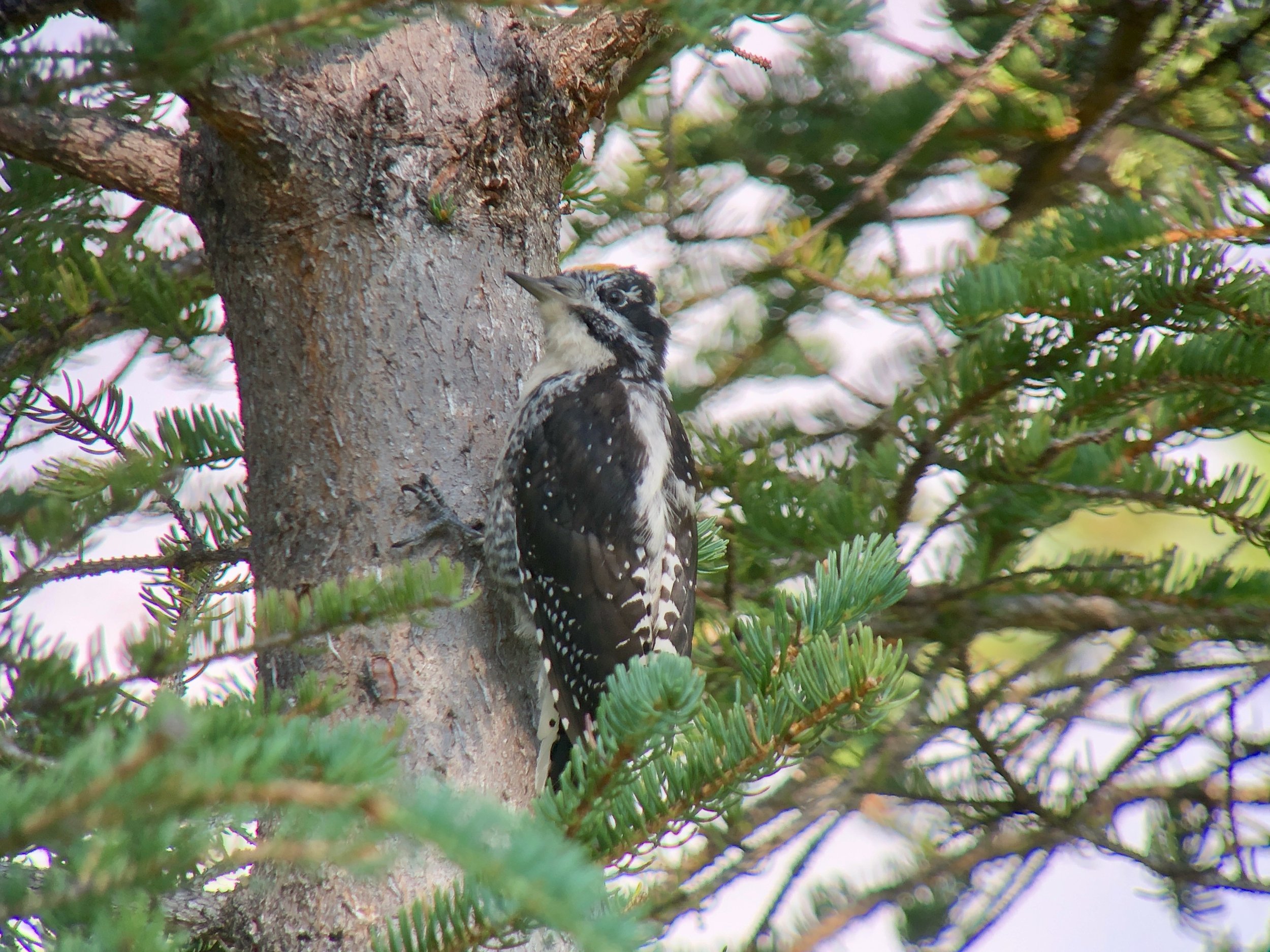
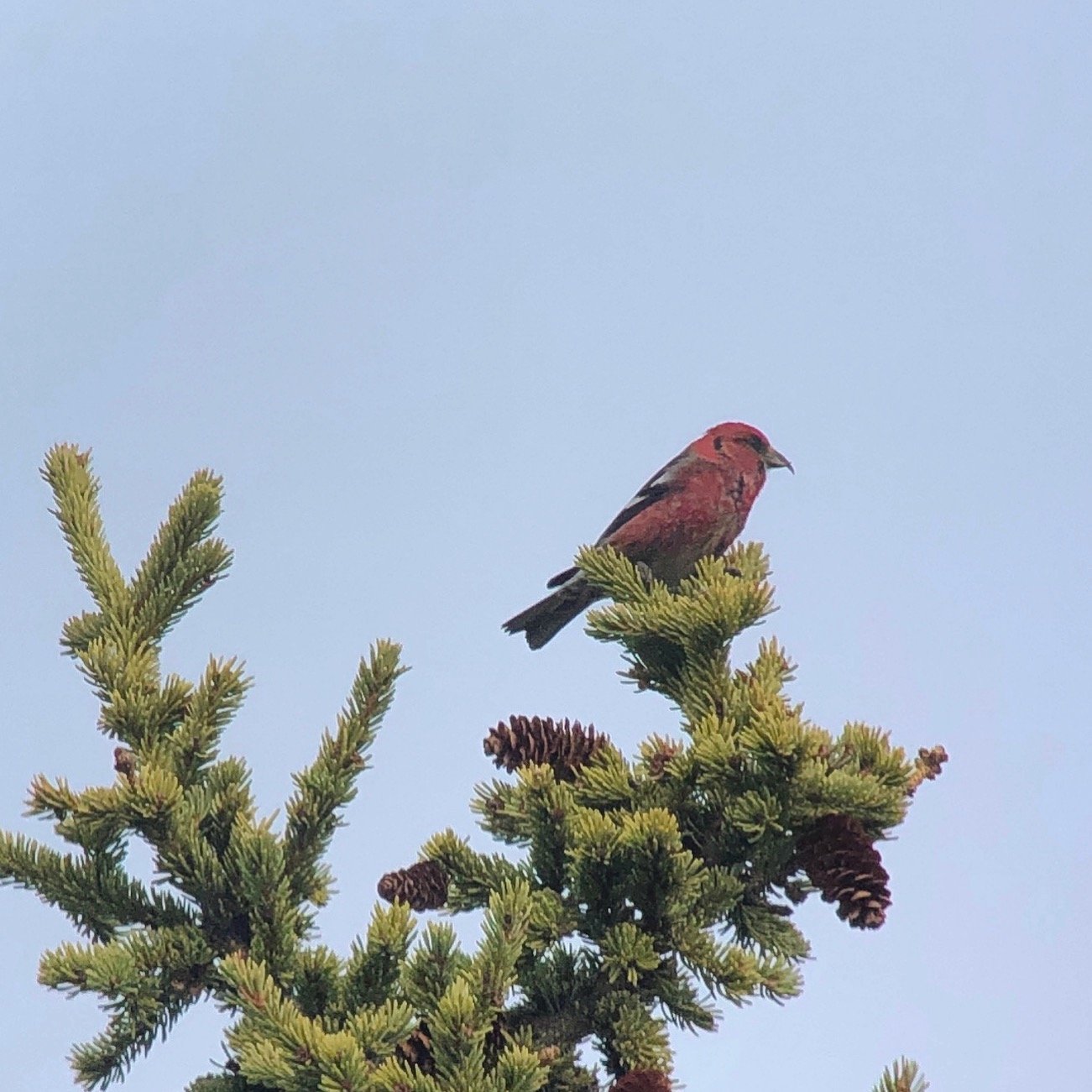
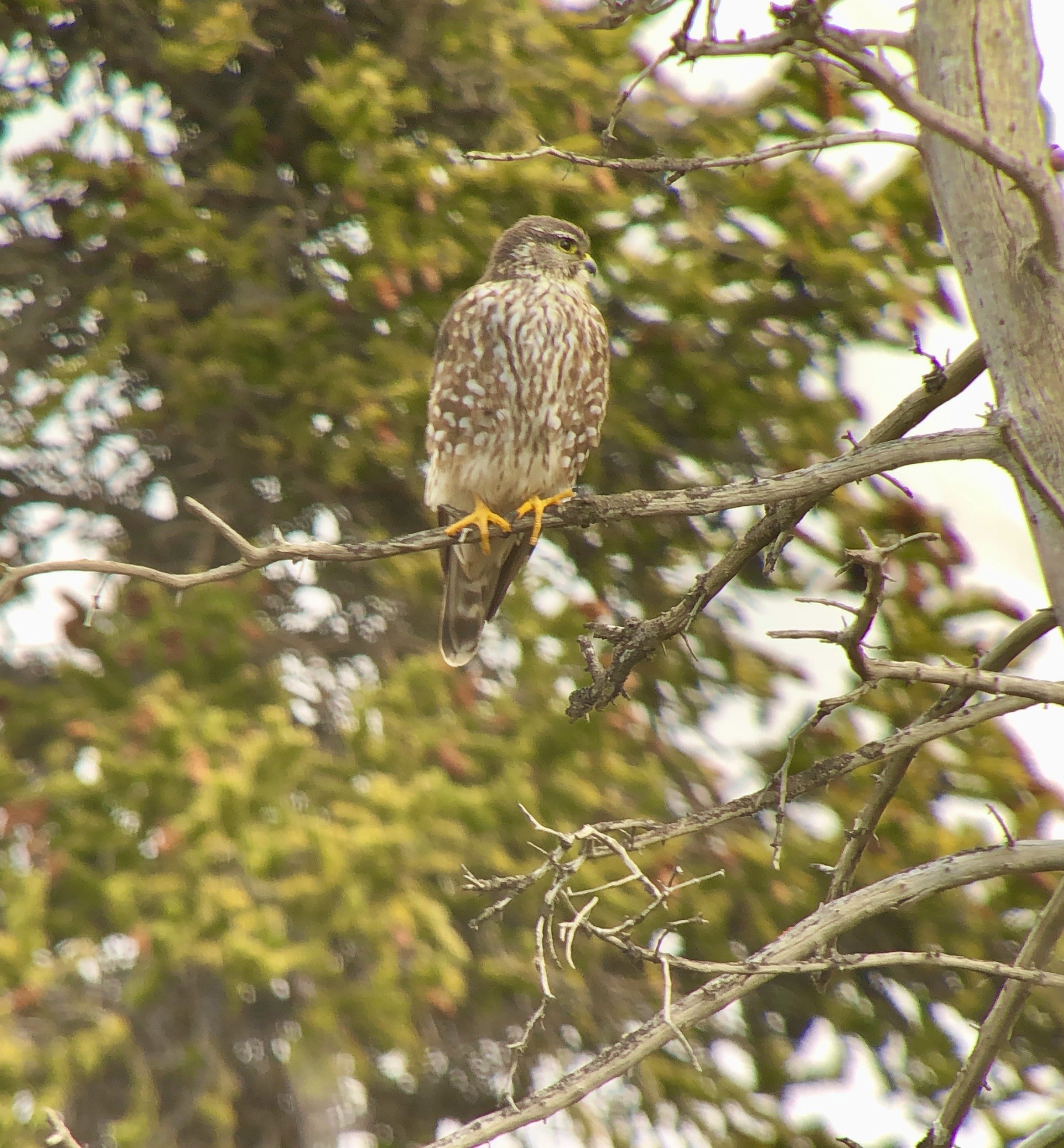
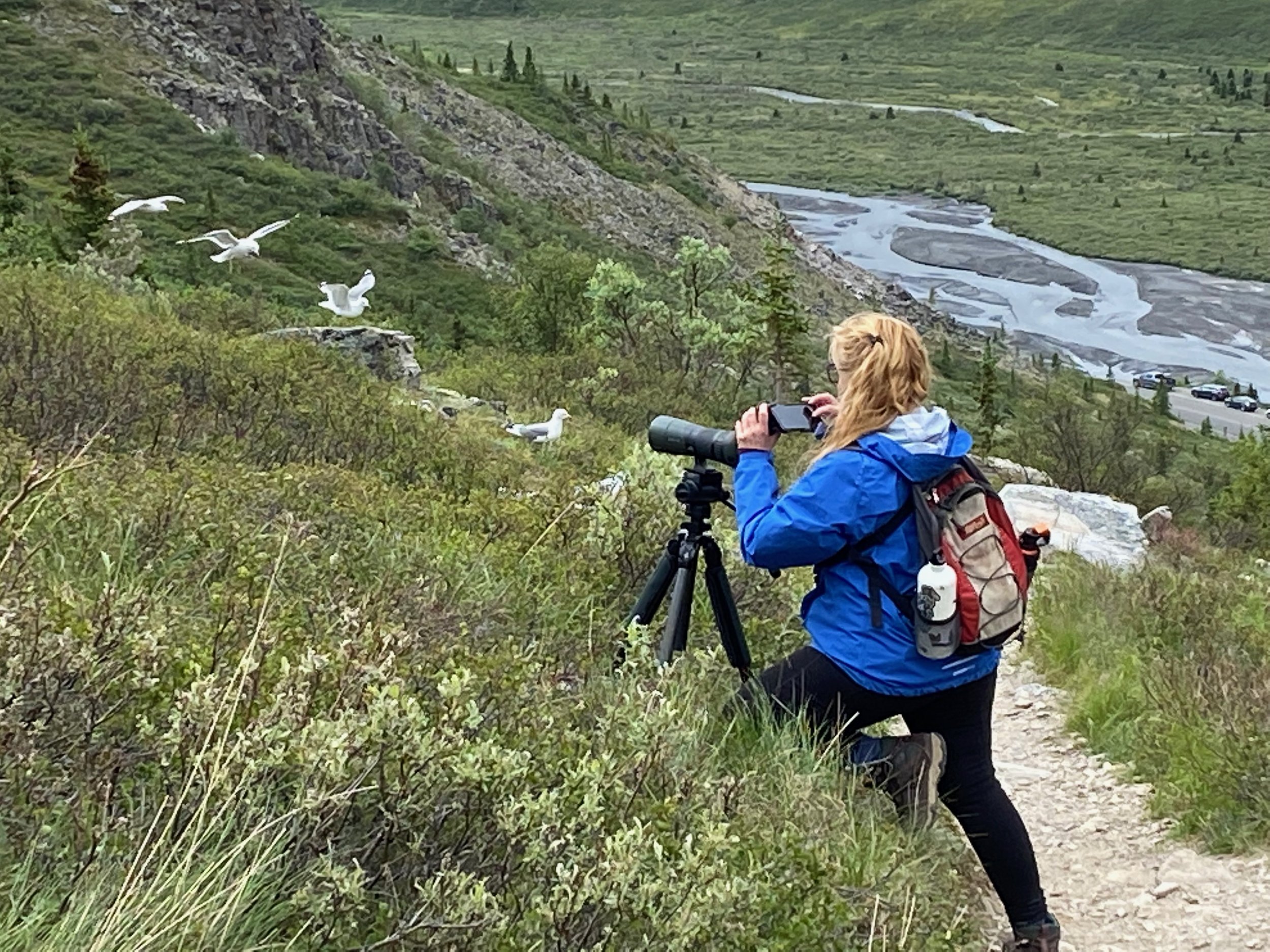
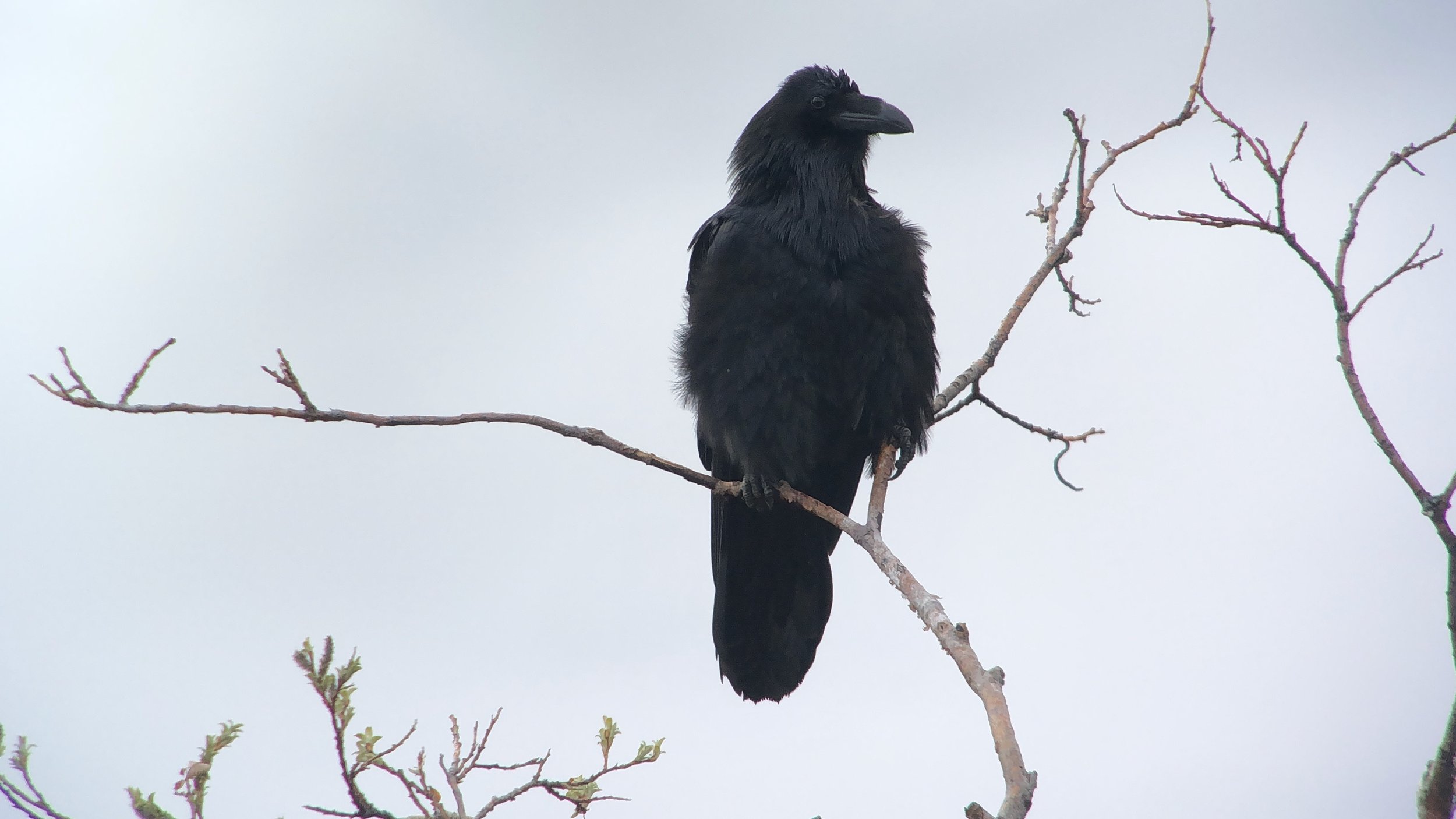
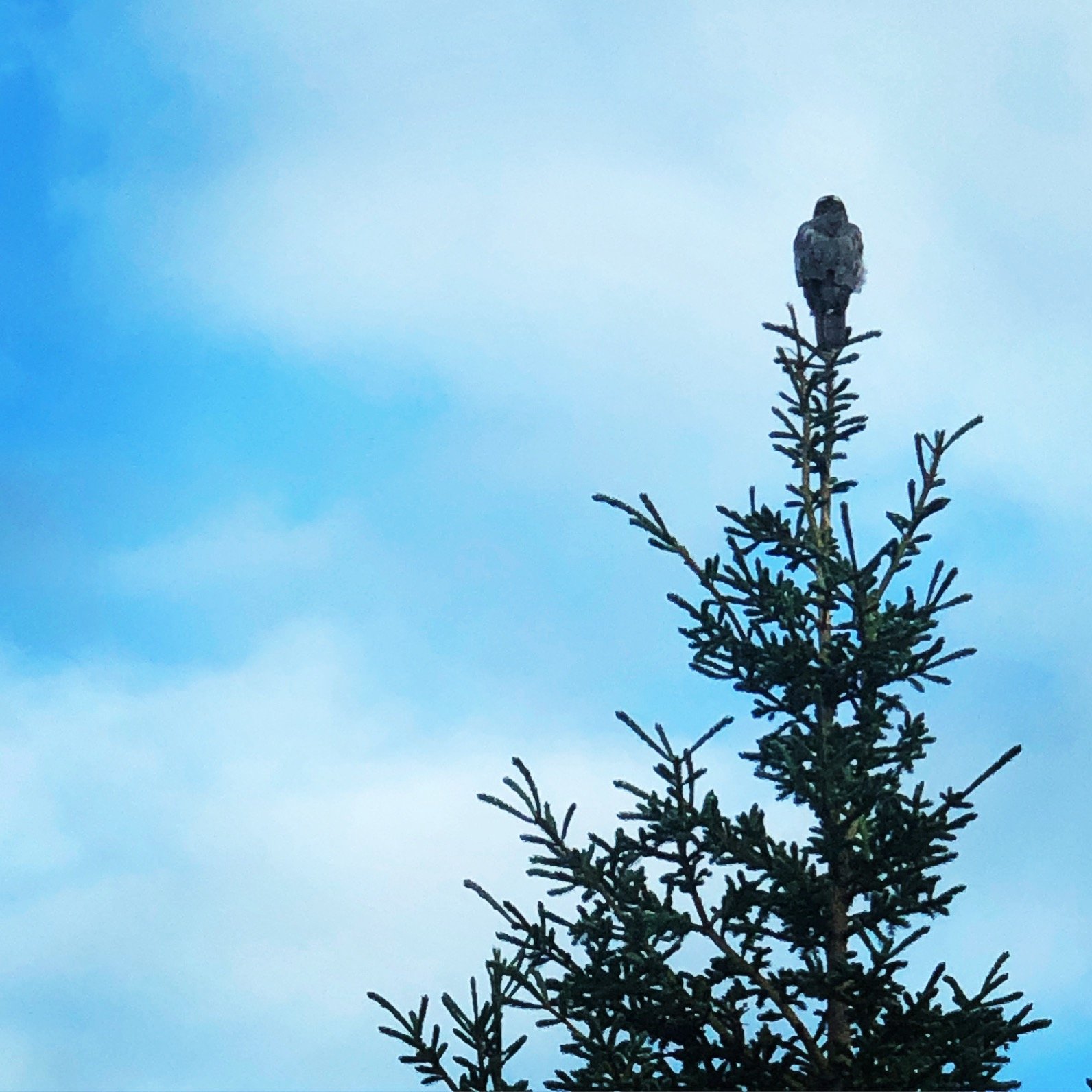
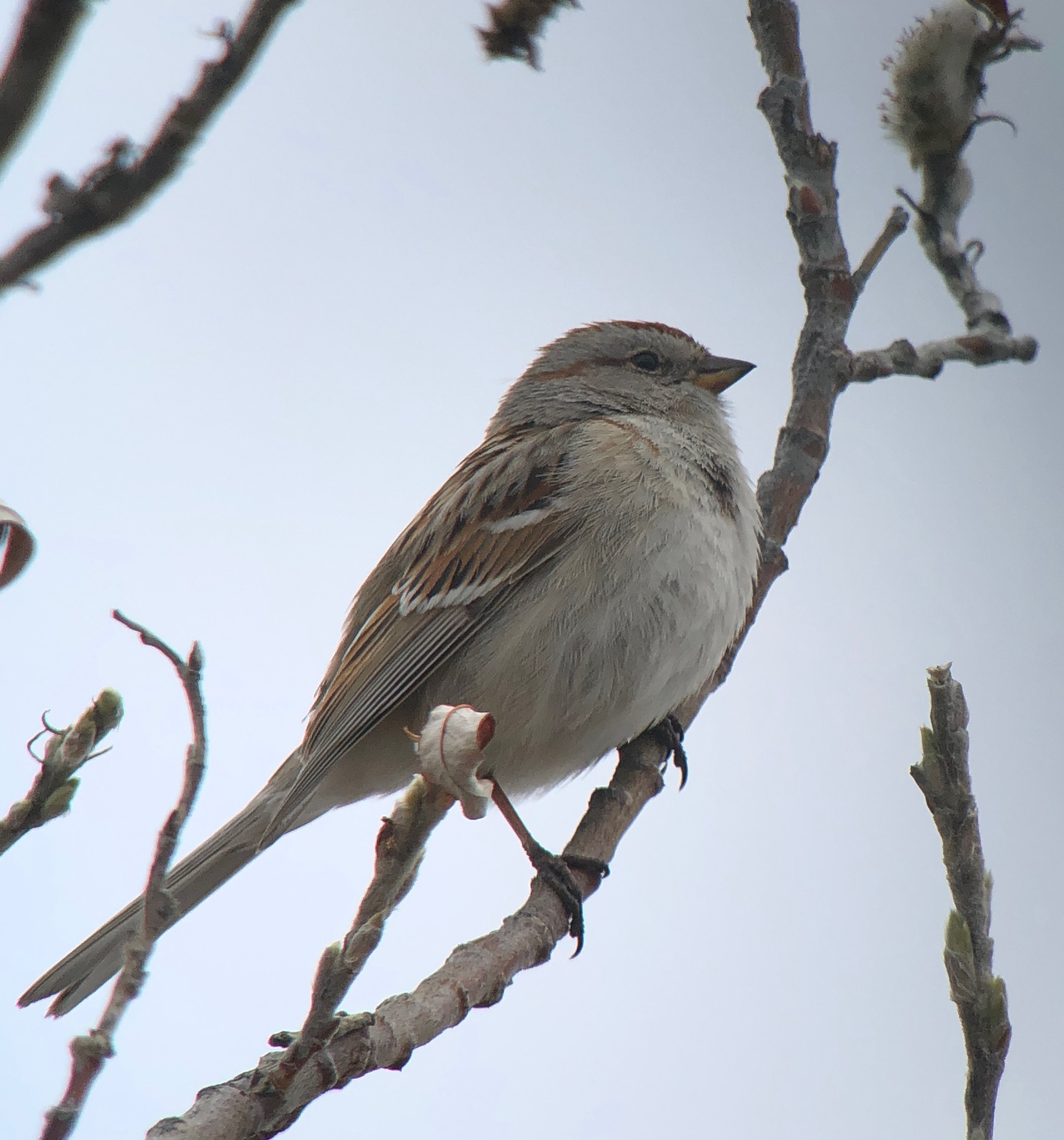
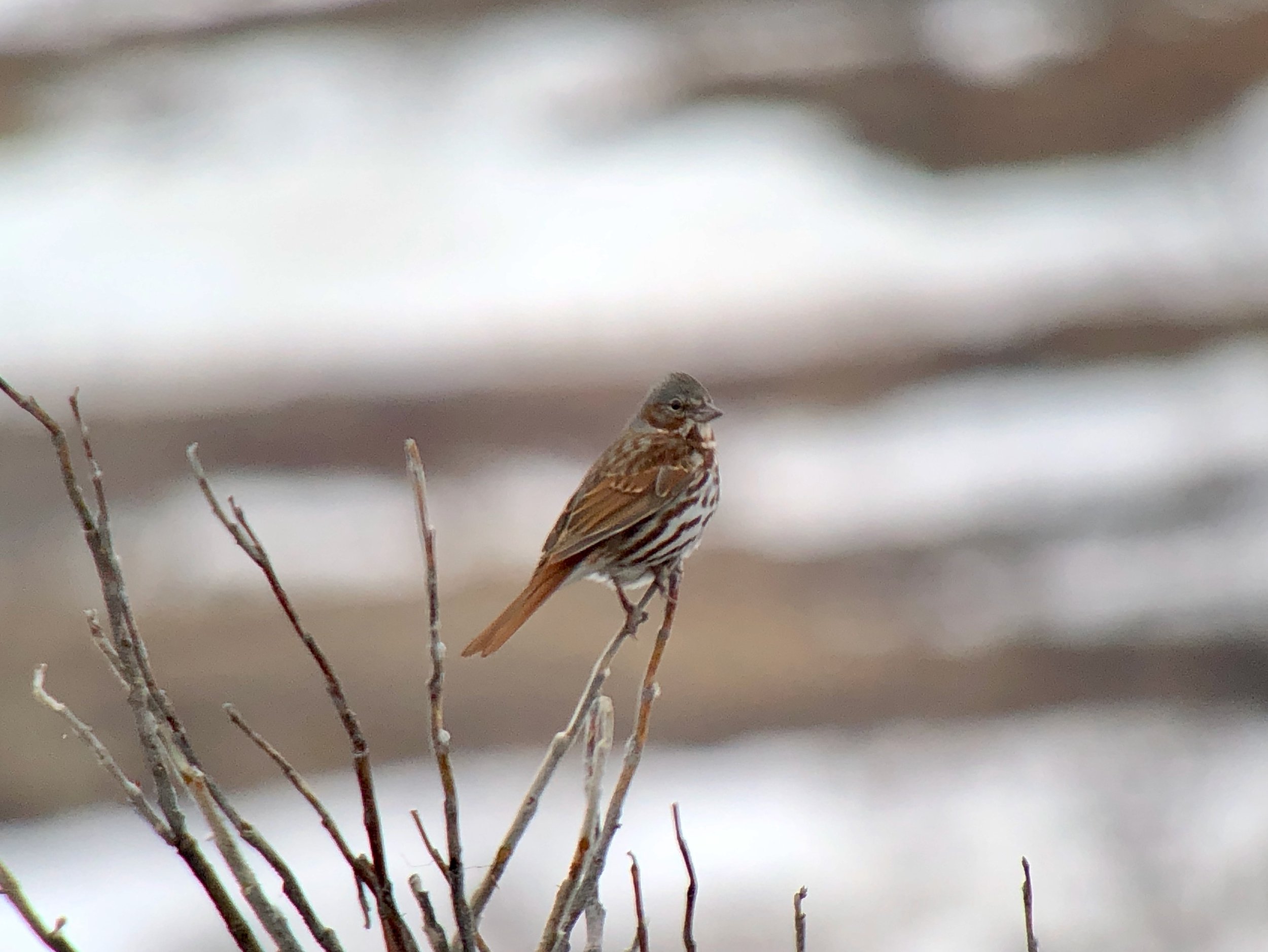
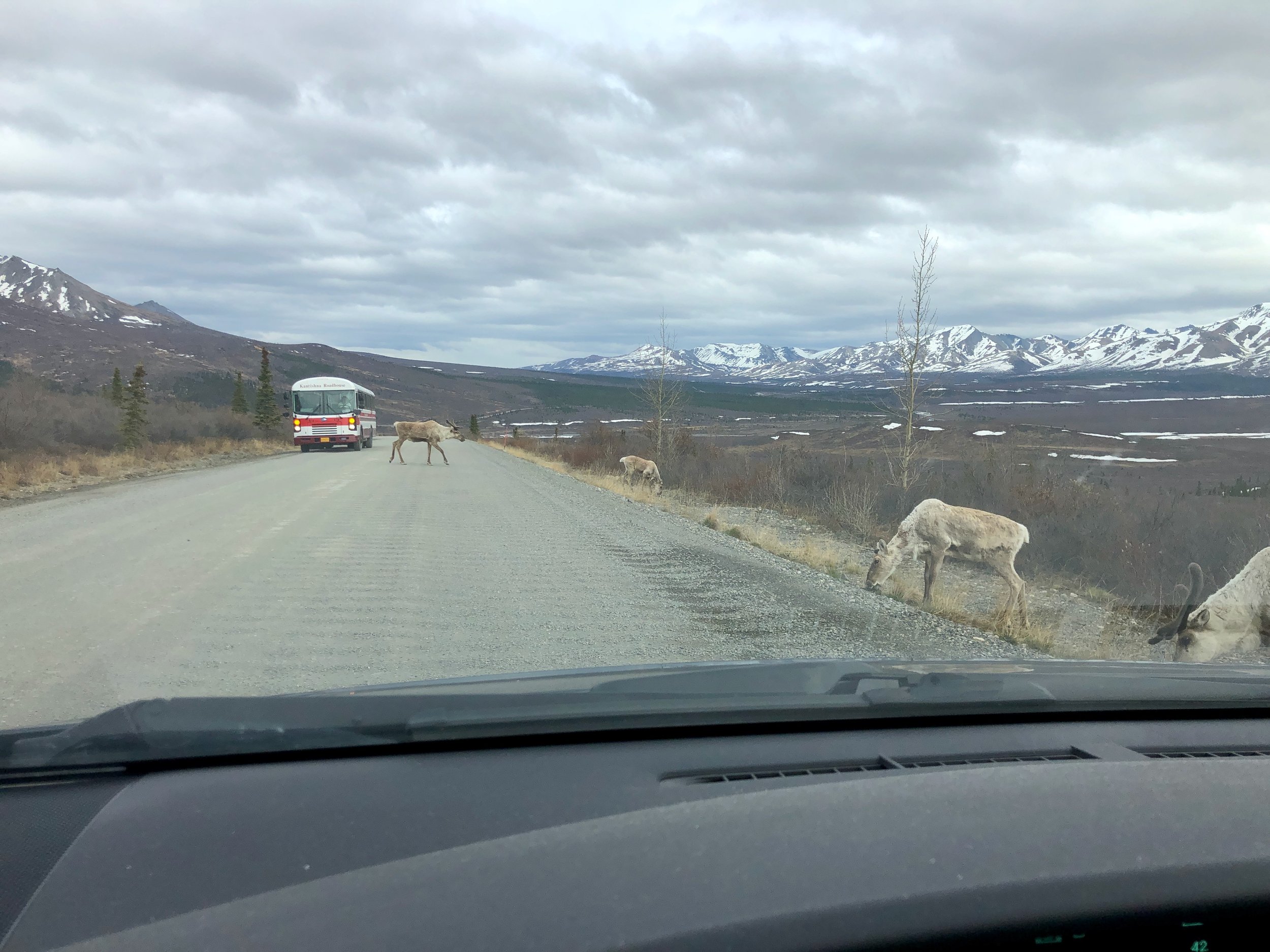
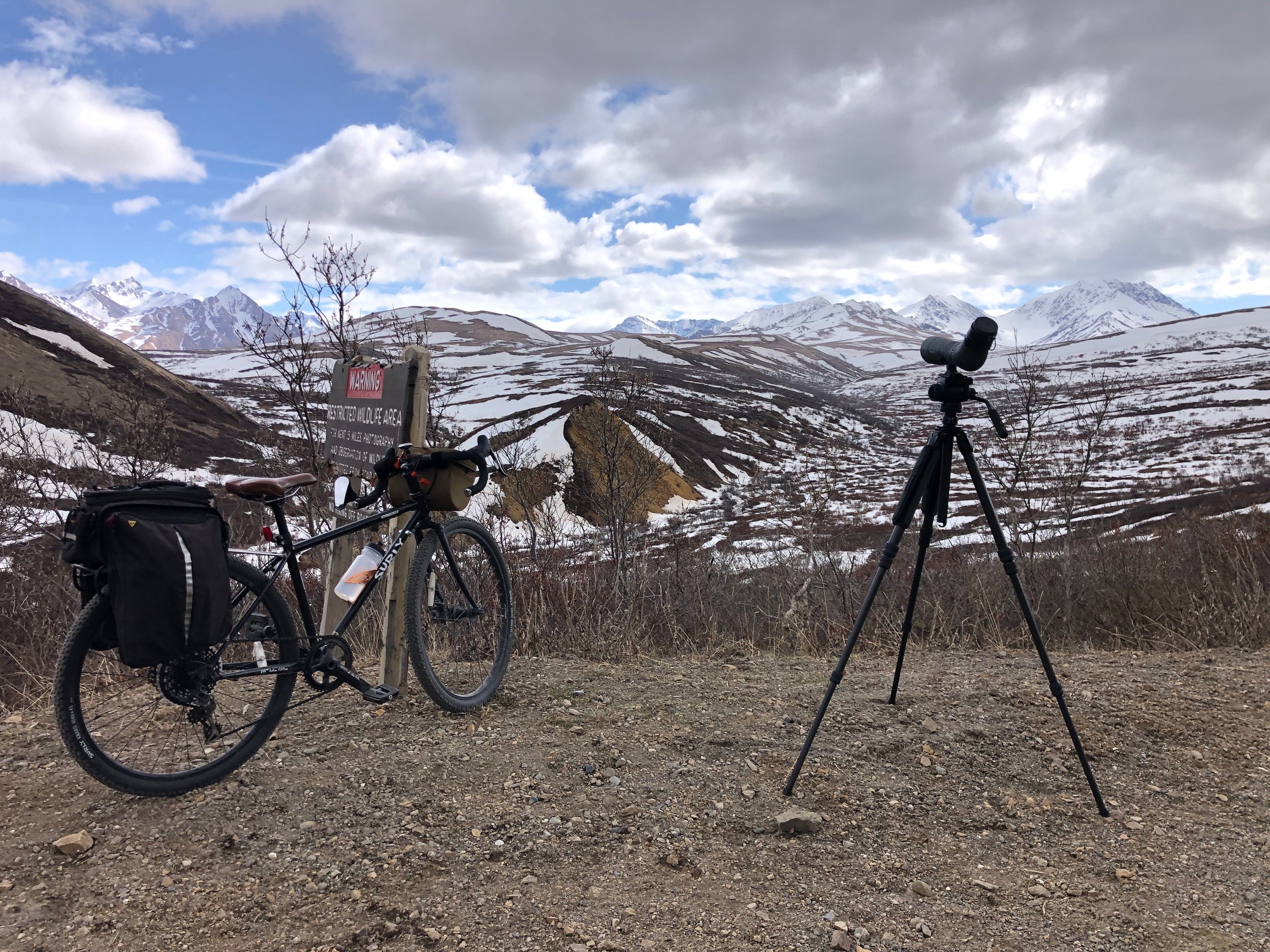
Digiscoped Images
Fresh Tweets
Would you like to hire me as a speaker for your event?
Email sharon@birdchick.com

